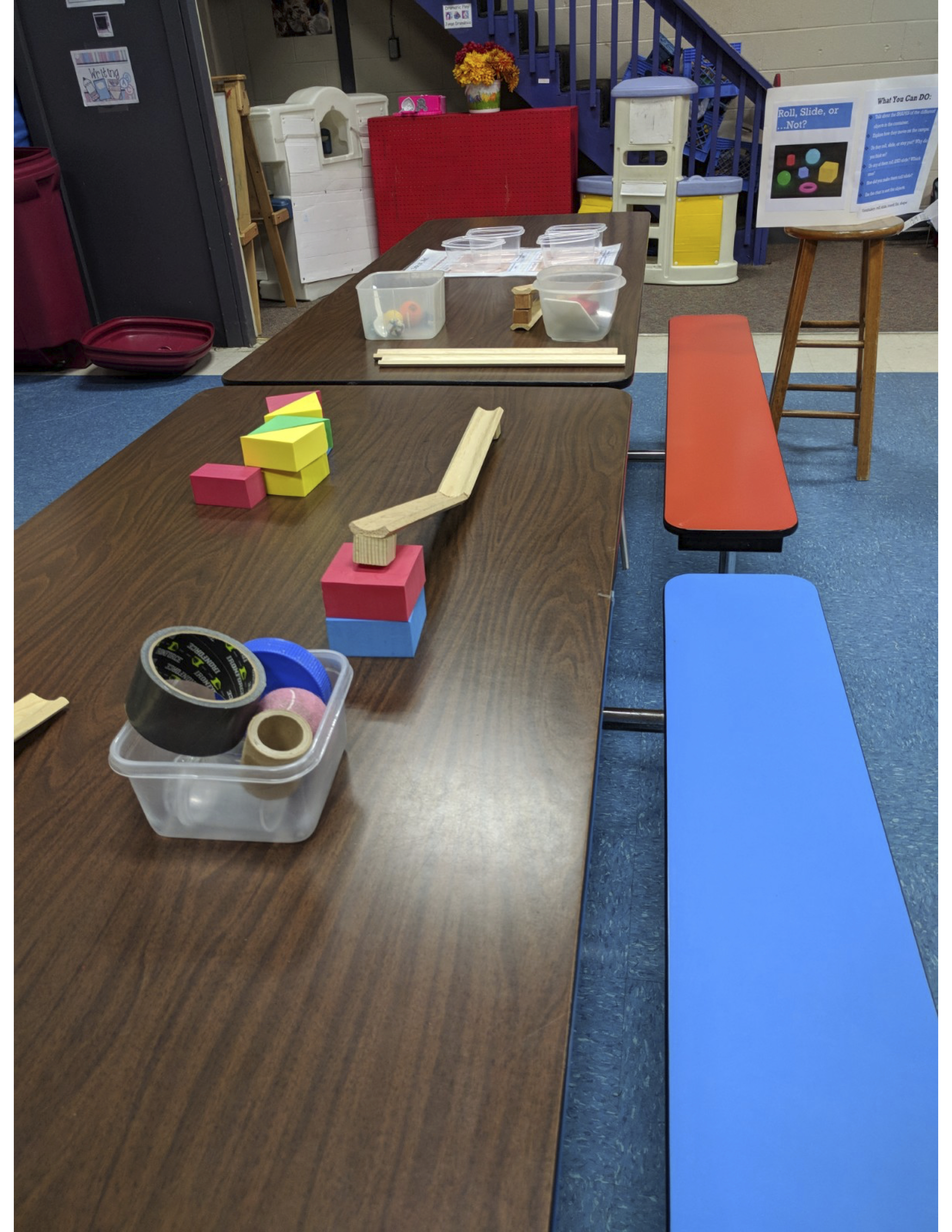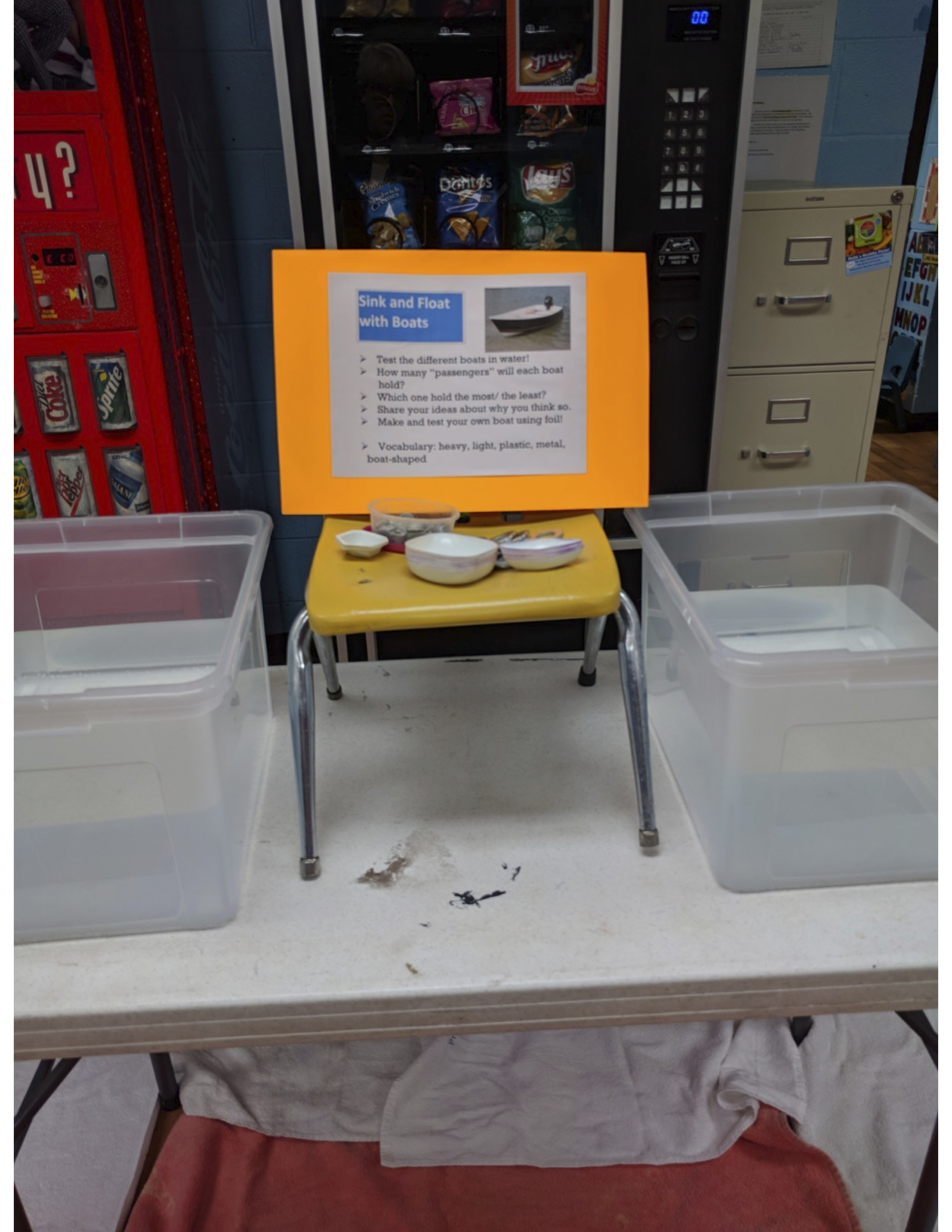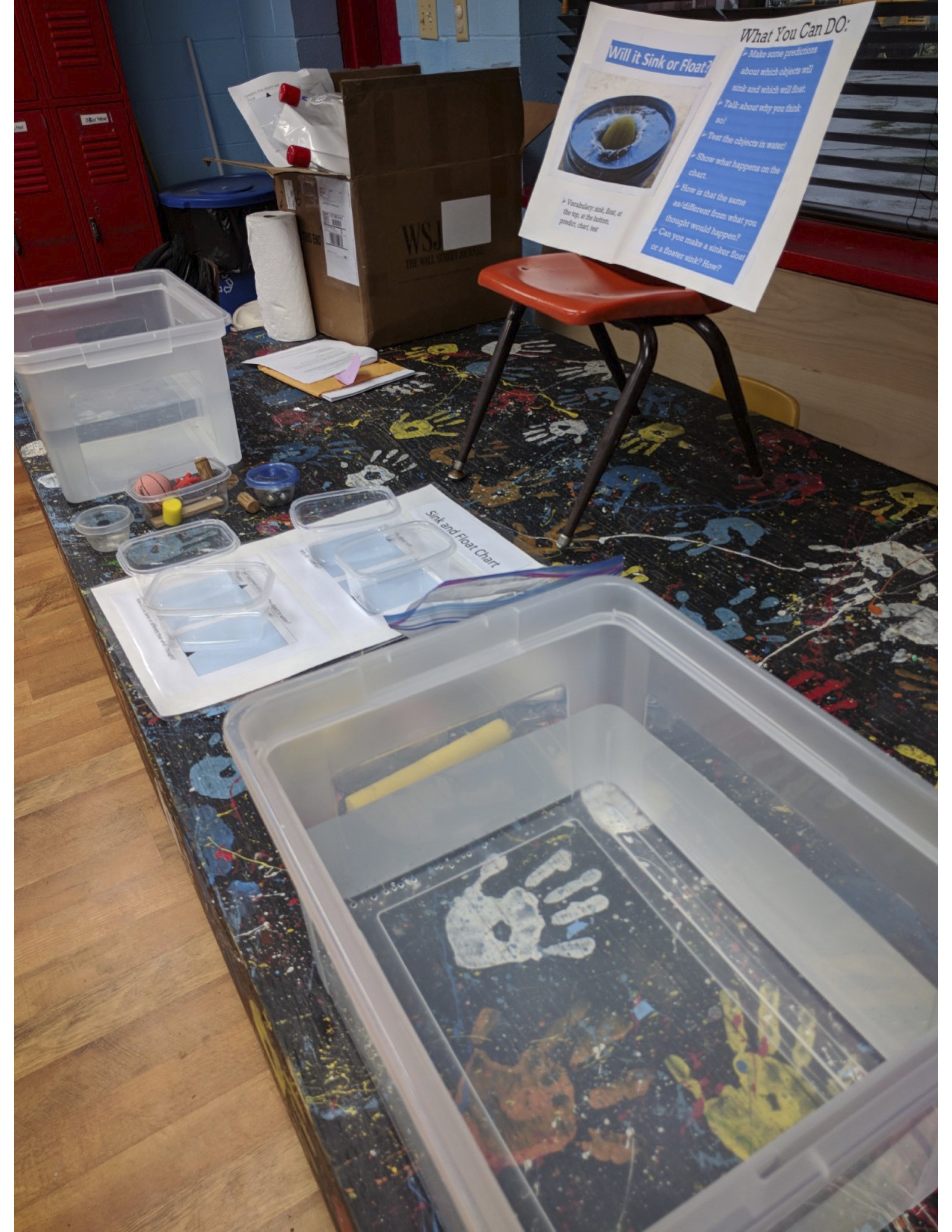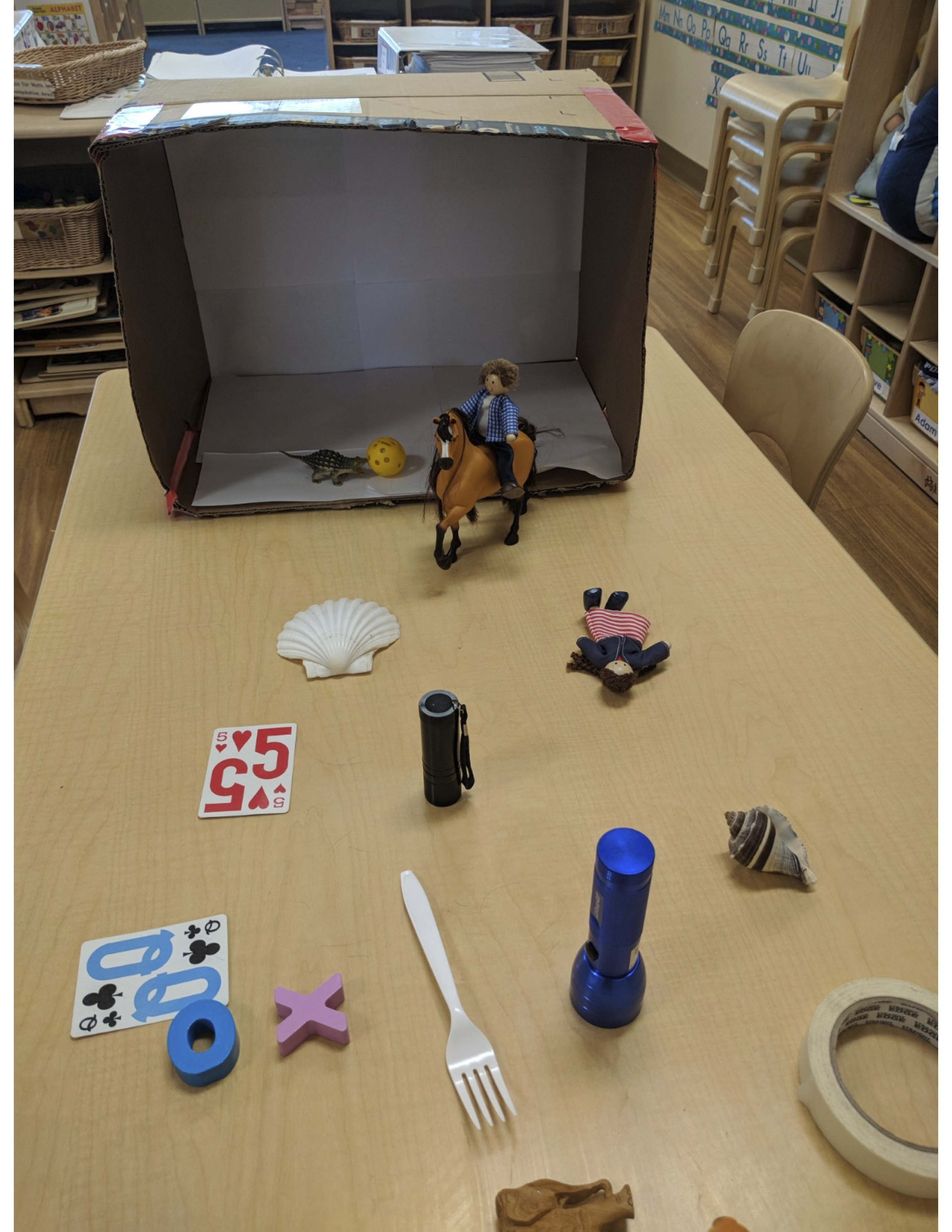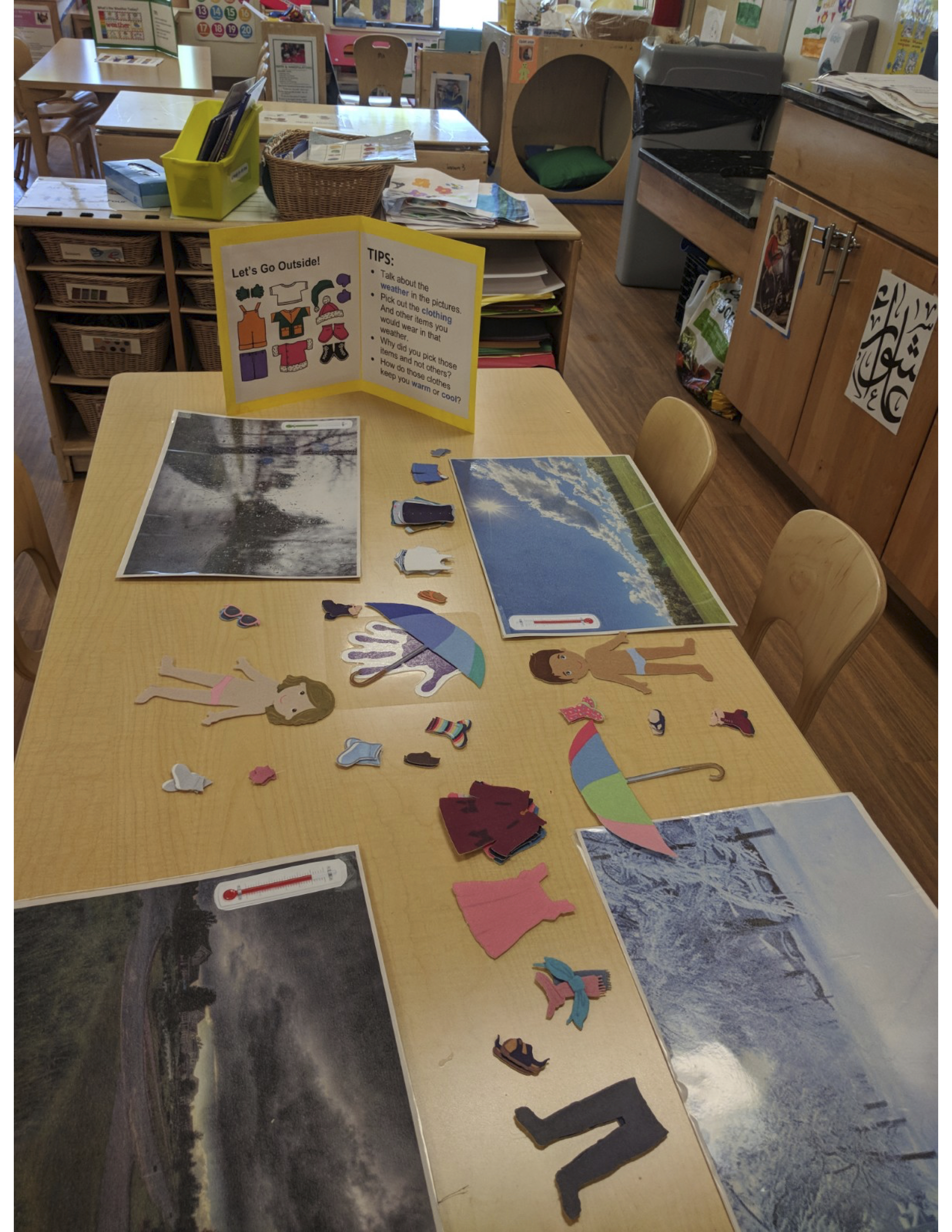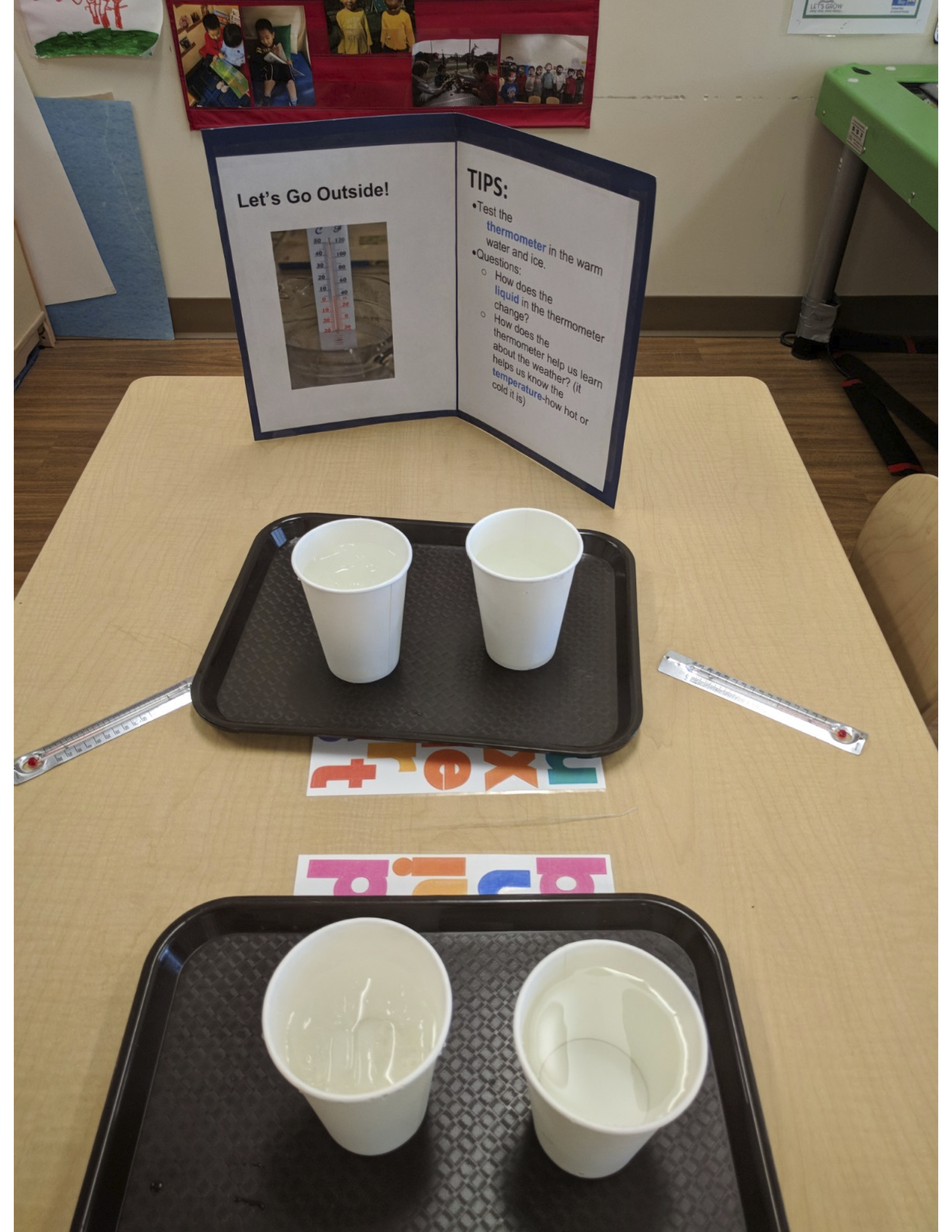Safety Blog
Safer Science Labs
By Kenneth Roy
Posted on 2019-08-30
A Manhattan jury recently awarded nearly $60 million in damages to a former Beacon High School student who was badly burned by a teacher’s botched chemistry experiment more than five years ago. The student suffered third-degree burns over 30% of his body, including his face, neck, arms, and hand. This happened when his teacher accidentally ignited a fireball during a “Rainbow Experiment” to show the colored flames produced by various salts. The teacher seemingly ignored many safety protocols while performing the experiment, including pouring highly flammable methanol directly from a gallon jug instead of using a beaker and pipette to dispense it. During the flame jetting of the methanol from the jug, students were seated too close to the demonstration and were burned. This took place in a classroom without a ventilated hood to remove fumes. Several safety deficiencies have often been identified in lab accident reports and warnings for this type of lab demo over several decades:
• students sitting too close to the demonstration;
• limited, inappropriate, or no personal protective equipment in use;
• no safety shield present or fume hood use;
• alcohol stock bottles sometimes used to refill hot ceramic dishes or surfaces;
• limited or non-existent teacher training in the hazards and risks of using flammable liquids with resultant safety actions.
RAMPing up safety
One approach to help prevent these types of safety incidents involves the active use of four principles of safety fostered by the American Chemical Society: Recognize hazards, Assess risks of hazards, Minimize risks of hazards, and Prepare for emergencies. Using the RAMP process allows teachers working in academic labs to help minimize risks and protect students from serious injuries. Unfortunately, if the first step of recognizing and understanding hazards is not successful, risk of hazard assessment may faulter.
A recent issue ACS Journal of Chemical Health & Safety (May/June 2019, Volume 26, Number 3) had a feature article titled “Recognizing and understanding hazards – The key first step to safety.” The author, Robert H. Hill Jr., presents an analysis of several incidents and illustrates how in most cases, if not all, the teacher lacks understanding of the hazards and in effect cripples the RAMP process, resulting in a safety incident. For example, he noted how the teacher in one case did not understand the properties of flammable liquids in high concentrations of flammable vapor above the liquid.
ACS has a video for students about RAMP and a video for teachers about RAMP.
The AAA method
A similar approach encouraged by the NSTA Safety Advisory Board is the AAA (Analysis, Assessment and Action) process for “driving home” safety involving a hazard Analysis, risk Assessment, and appropriate safety Action. It addresses the need of doing a full hazard analysis as the first step.
To located the hazards for a lab or demo, one reliable source is the Safety Data Sheets: Section 2—Hazard(s) identification: All hazards regarding the chemical and required label elements. Other sources include inquiring with fellow colleagues, checking out the NSTA safety portal, the NSTA safety alert and the ACS safety alert.
Once hazards are analyzed, the associated risks can be assessed. For example, if the chemical is flammable and vapor builds up, a flash fire and jetting flame can be effected. The risk in this case includes extreme heat and active flame exposure for observers. Lastly, determine the appropriate safety actions that should be taken as precautions, given the hazards and resulting risks. In the case of the Rainbow demonstration, the safer action is an alternative demo eliminating the use of the flammable methanol. This can be done by dissolving the salts in water, soaking a wooden applicator stick in the solution, and running it over an active Bunsen Burner flame.
In the end
Whether RAMP or AAA is used, one thing is clear: Most safety incidents can be avoided if done in a safer way using one of these two hazard analysis approaches. Once employed at science teachers, too many schools don’t follow up with initial or annual safety training for science teachers—that is, until an accident occurs and there is a lawsuit like the one mentioned above. Stay safe. Don’t destroy a student’s life or your own.
Submit questions regarding safety to Ken Roy at safersci@gmail.com or leave him a comment below. Follow Ken Roy on Twitter: @drroysafersci.
NSTA resources and safety issue papers
Join NSTA
Follow NSTA
A Manhattan jury recently awarded nearly $60 million in damages to a former Beacon High School student who was badly burned by a teacher’s botched chemistry experiment more than five years ago. The student suffered third-degree burns over 30% of his body, including his face, neck, arms, and hand. This happened when his teacher accidentally ignited a fireball during a “Rainbow Experiment” to show the colored flames produced by various salts.
Breathing Life into Lessons
By Gabe Kraljevic
Posted on 2019-08-30
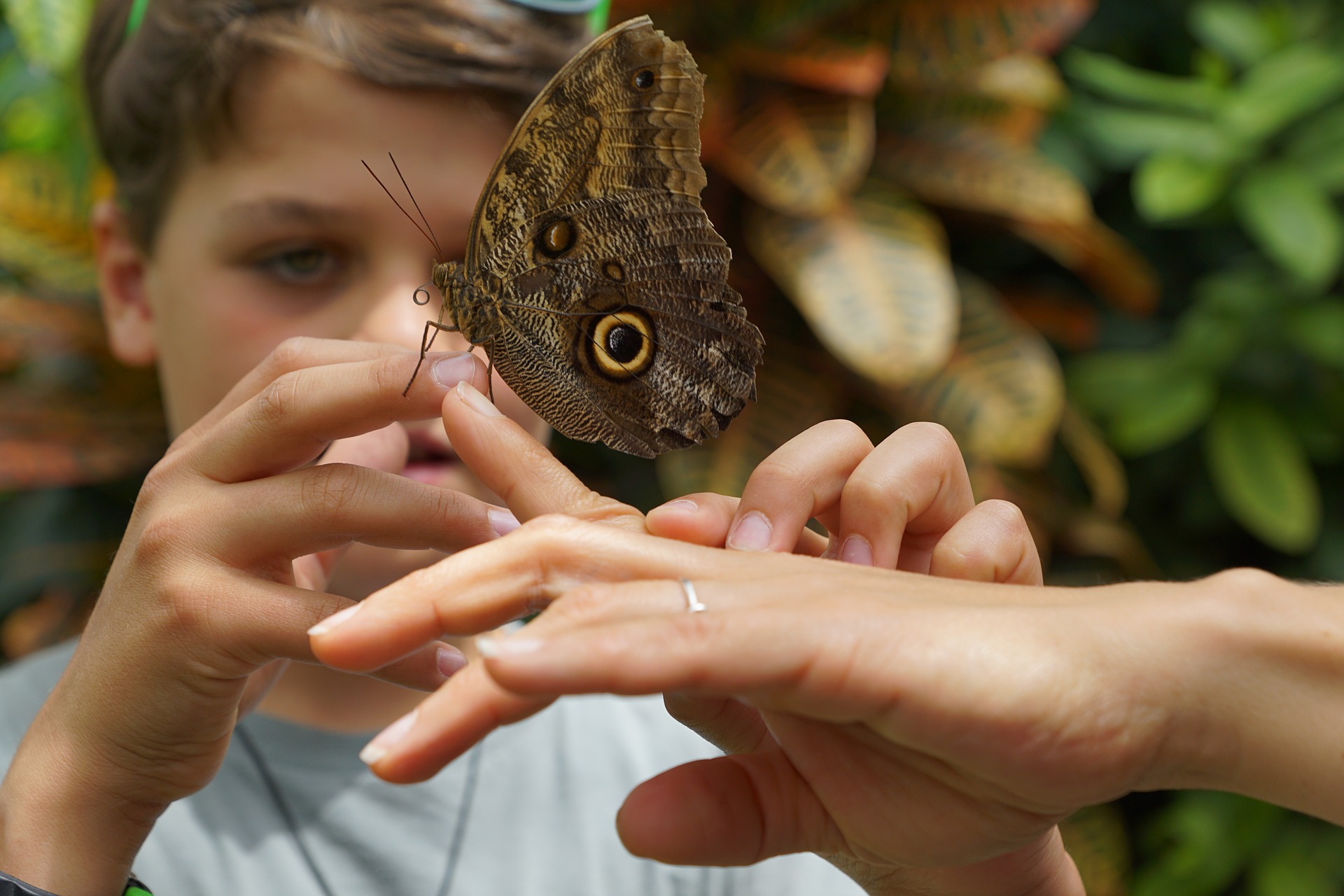 I find it challenging to engage elementary students in the life sciences. What are some hands-on activities that work? Are there anchoring phenomena that you recommend?
I find it challenging to engage elementary students in the life sciences. What are some hands-on activities that work? Are there anchoring phenomena that you recommend?
—C., Utah
Depending on your curriculum, you could pursue several avenues to capitalize on students’ innate curiosity about nature and engage them in their learning.
One of the easiest is to explore your school grounds. Observing how natural processes and organisms take advantage of almost any condition can be powerful anchors for lessons. Questions like, “How can weeds grow in sidewalk cracks?” or “How can ants survive on a playground?” can lead to broad-reaching inquiries. The questions students raise or phenomena they observe are almost limitless.
Consider introducing a classroom pet or aquarium and make the students the caretakers. Focus lessons with the presence of these living things. Tending a school garden can be enjoyable and educational at the same time. Sharing their harvest will also build a community spirit among your students. Individual projects like terrariums or pop-bottle ecosystems will develop a vested curiosity and motivation to keep them thriving.
Field trips to nature centers or zoos are always memorable and introduce students to experts, careers and role models. Many conservation groups have outreach programs to bring nature into the classroom.
A good introduction into genetics and heredity is for the class to go through a list of human genetic traits and collate their results. Funny traits to track: widow’s peak hairline, hitchhiker’s thumb, attached/detached earlobes, tongue curling, convex/concave nose, and so on. To avoid conflicts with family privacy, keep this introductory activity as a simple survey among the students in your class.
Hope this helps!
Image by photosforyou from Pixabay
 I find it challenging to engage elementary students in the life sciences. What are some hands-on activities that work? Are there anchoring phenomena that you recommend?
I find it challenging to engage elementary students in the life sciences. What are some hands-on activities that work? Are there anchoring phenomena that you recommend?
—C., Utah
Depending on your curriculum, you could pursue several avenues to capitalize on students’ innate curiosity about nature and engage them in their learning.
Measuring Murphy’s Law with the Vernier Go Direct Acceleration Sensor
By Martin Horejsi
Posted on 2019-08-28
On the 4th of July this year, a fitting date, America lost a true hero whom many people had never heard of, namely Robert Gilliland. Bob Gilliland was the chief test pilot and first person to fly the iconic SR-71 Blackbird, arguably the coolest airplane in history.
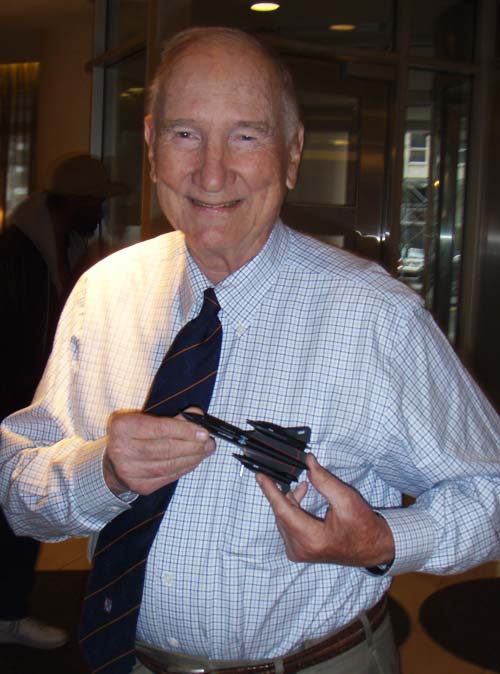
Even without all its world records, the profile of the Blackbird has inspired and awed generations for generations. And if the first SR-71 flight wasn’t enough, Bob took the beautiful new Blackbird to supersonic speed on its maiden voyage back in December of 1964. Something unheard of! And Bob told me he flew the first flight of every Blackbird to follow ultimately logging more time at mach 2 and mach 3 that anyone else on earth.
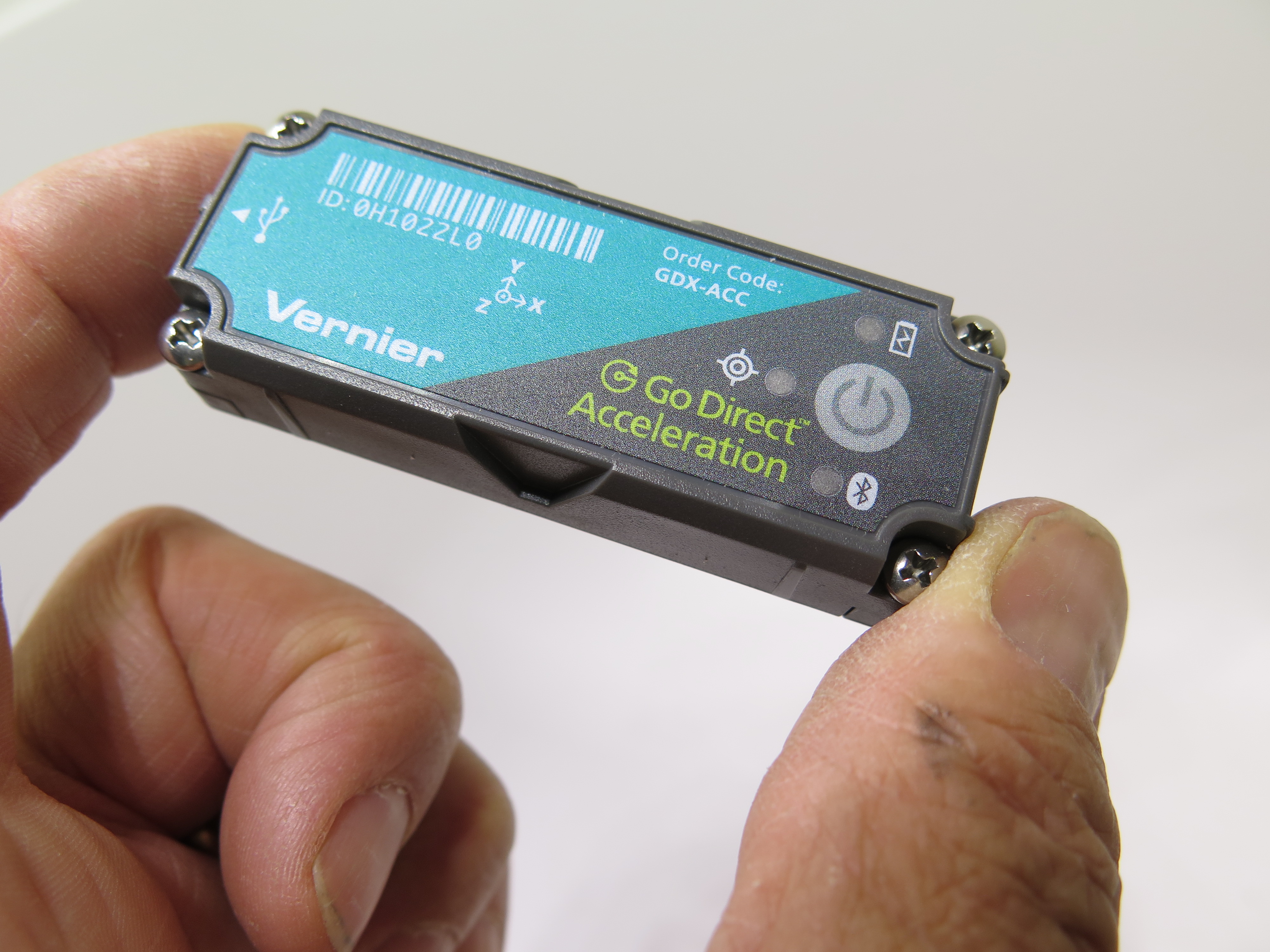
In order to get up to those supersonic speeds in a reasonable amount of time, the Blackbird accelerates at around 20 meters per second or about 10 times faster than a commercial airliner taking off. The pilot of an SR-71 experiences the feeling of about 2 g, or twice the usual tug of the earth. That impressive force you feel when your Boeing 737 takes is only adding about two-tenths of a g.
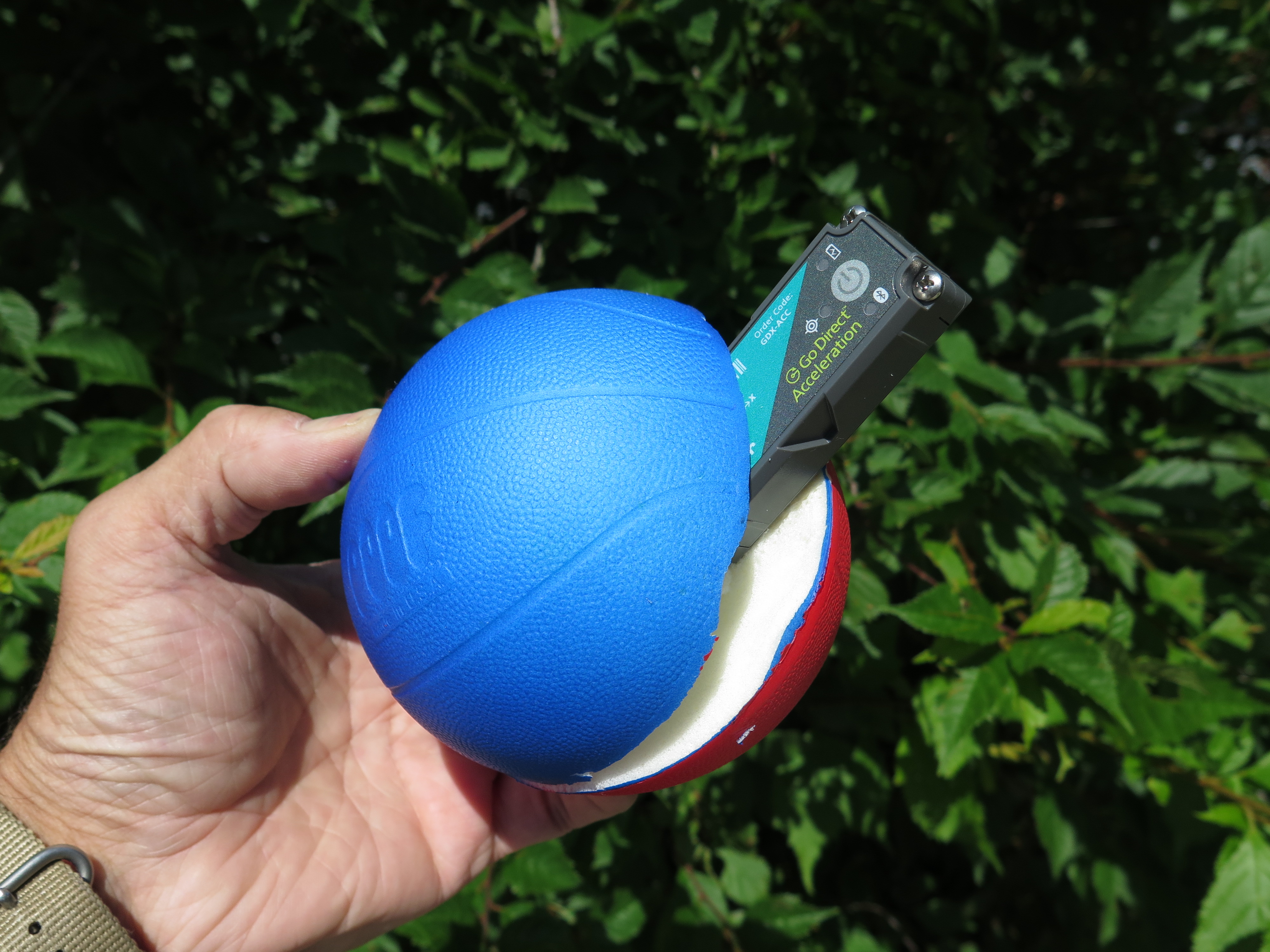
Acceleration is a change in velocity where velocity is a change in position. While basic on the surface, acceleration causes much confusion in the science classroom. And speaking of confusion, the famous, infamous rather, Area 51 was where the SR-71 was born.

The Skunkworks in Area 51 was home to Clarence “Kelly” Johnson, the legendary aircraft designer. I read as story about Kelly where he was in a meeting to discuss a new military aircraft. Several requirements for the plane were given and Kelly, in his head, calculated the necessary wing surface area and shape to get the job done. Remember, powerful computers, CAD, and the internet were still a long ways off in the future. Which leads me to another story, one that Bob Gilliland told me personally. First, remember that Bob was flying around in the SR-71 at 85,000 feet at three times the speed of sound. The SR-71 could fly about 3000 miles on a tank of gas, or roughly 90 minutes. To do an extended international mission, a supporting team of aerial refueling tankers had to be staged along the route. So in the era prior to GPS navigation, there was Bob with map on knee dropping to about as low and slow as the Blackbird could fly to mate up with a fuel tanker in a sky dance with the tanker flying as fast as it can. Time was critical as the now-inefficient SR-71 engines were struggling in the dense air. I imagine it somewhat like a Star Trek or Star Wars scene where a ship traveling faster than light suddenly slows and just appears in a new place. Bob told me, and I quote, “You’ve never been lost until you’re lost at mach three!”
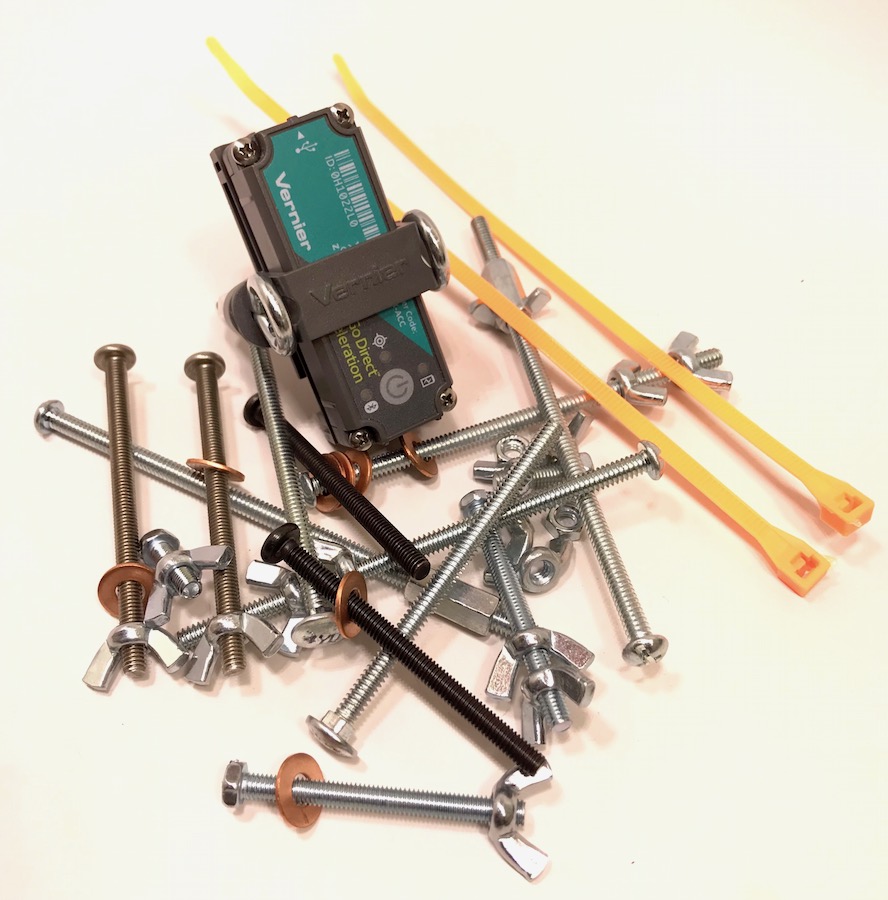
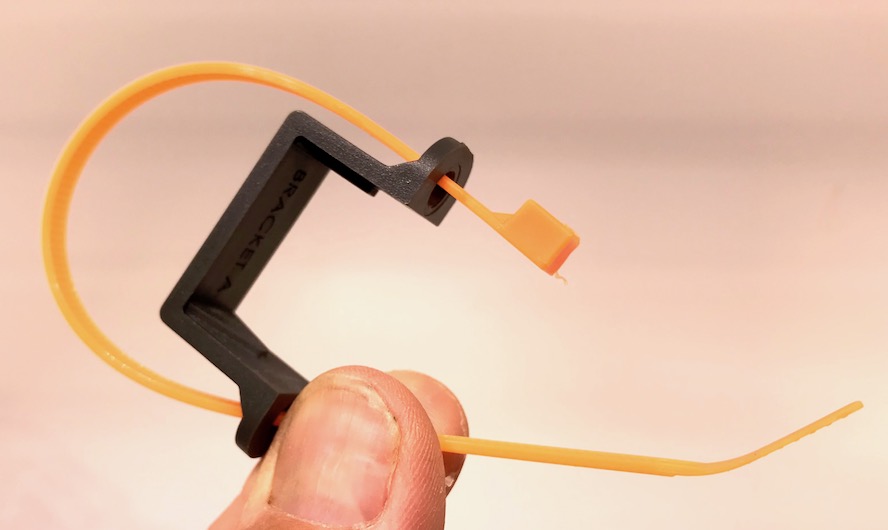
Mach 3 is 38 miles a minute, or over half a mile a second. A few minutes of miscalculation and you could be over the wrong state or even the wrong country!
Now once a vehicle is at it’s cruising speed whether bicycle of Blackbird, the sensation of movement maybe impossible. As anyone knows who has had a very smooth flight on an airliner, at cruising speed it’s impossible to tell with your eyes closed if the plane is sitting still on the ground, or flying at 500 miles per hour at 37,000 feet. Thus is the magic of acceleration. Only change is detectable.
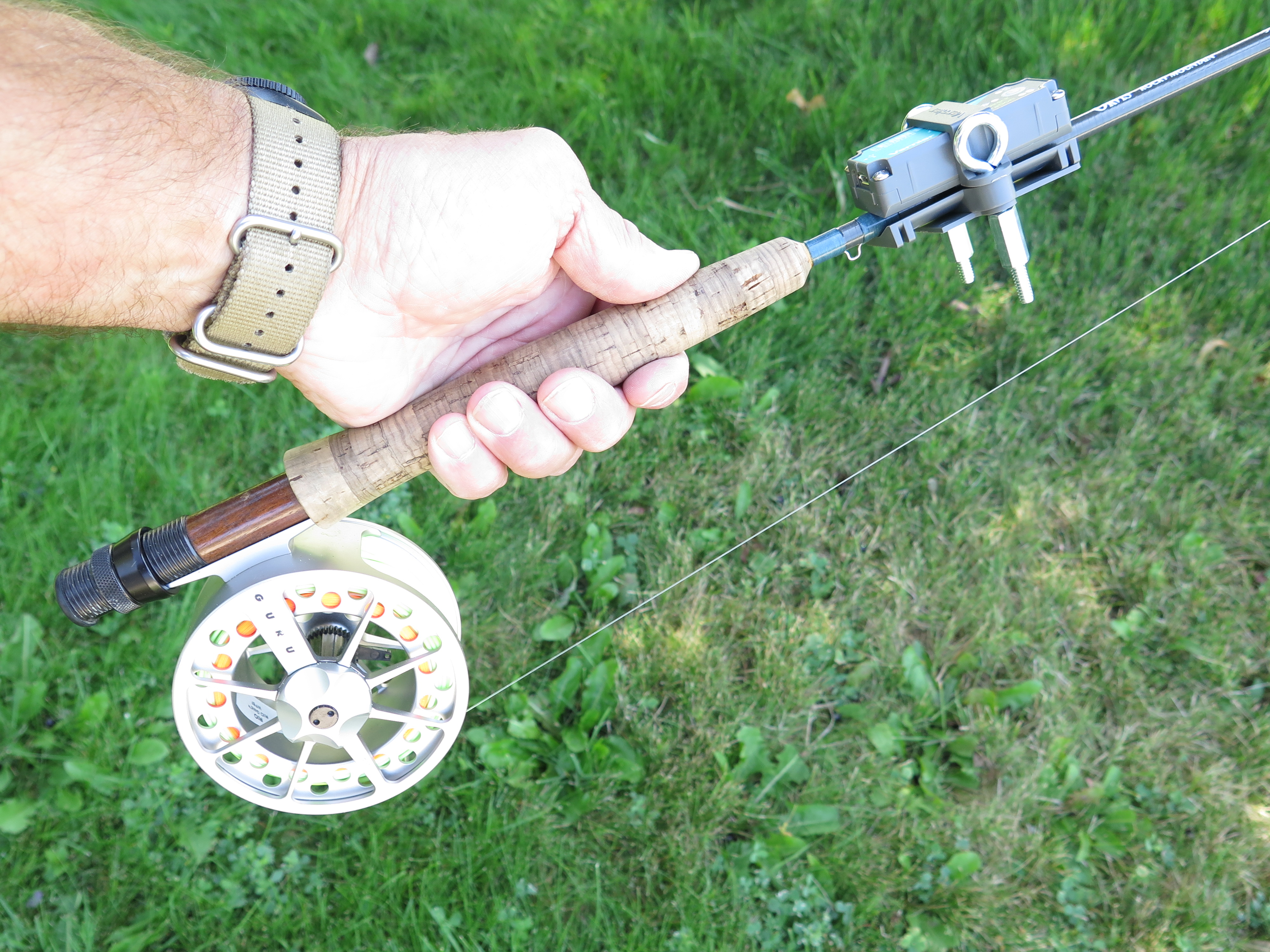
Golf clubs, tennis rackets, and baseball bats are also obvious candidates for science fun. In fact, since all activities involve movement (hence the name activity), the Vernier Go Direct Acceleration sensor could be used to create science experiments almost anywhere. I can even imagine an entire science fair where the Vernier Go Direct Acceleration sensor was used in every single student’s scientific inspection of something. Hmm, maybe there is room for a Acceleration Fair?
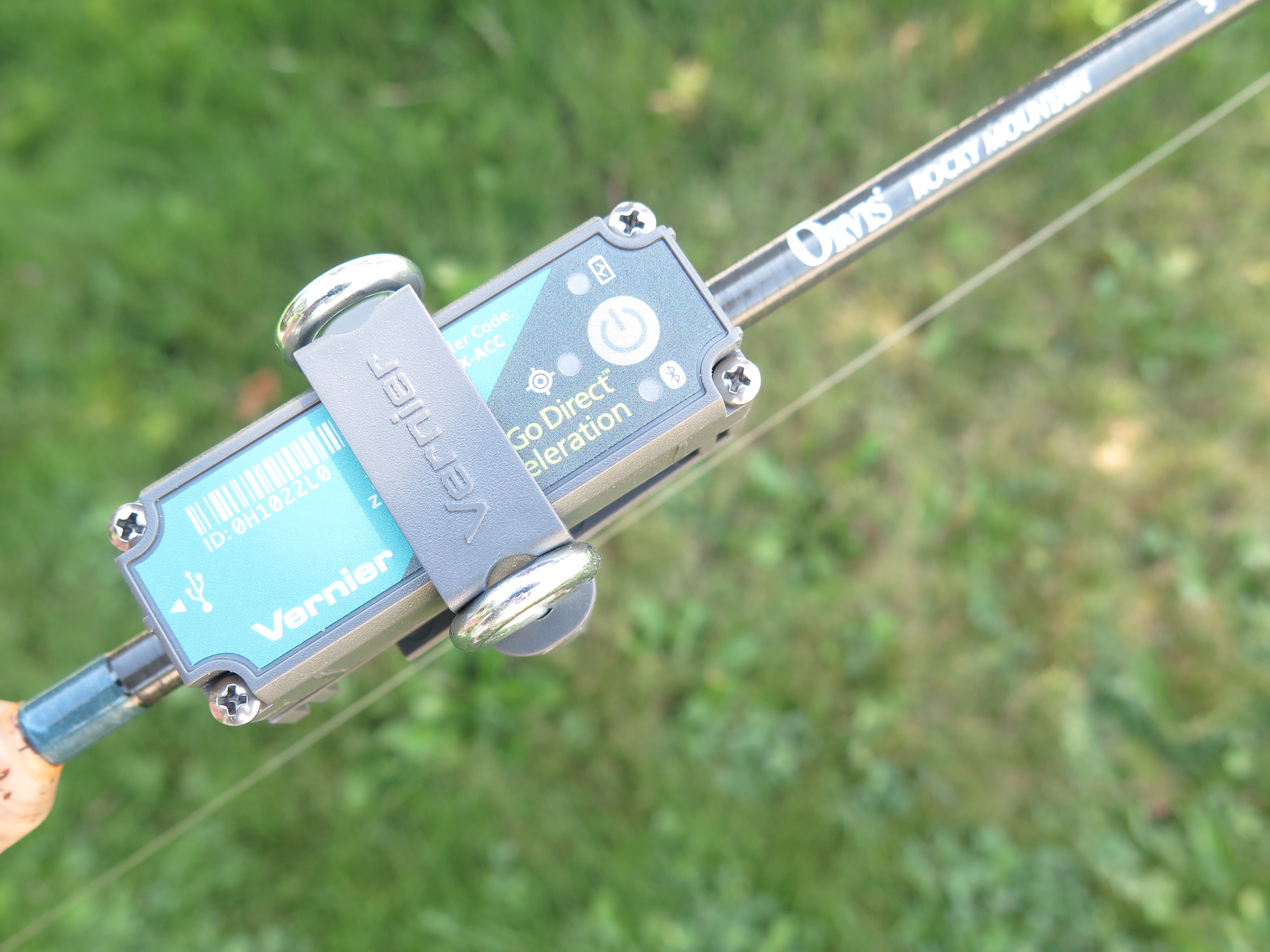
Prior to the development of the SR-71, the parameters of the human body with regard to acceleration, or rather deceleration, were hot topics. How much deceleration could a human take and remain conscious, or even remain alive? To explore that physiological avenue, rocket sleds and centerfuges were used where “living sensors” were strapped into a seat and subjected to incredible speeds and slow-downs. One such engineer on the project was named Edward Murphy who proposed using strain gauges in addition to live subjects. It was the beginning of the popular use of Murphy’s Law when in one centrifuge trial every one of the strain gauges were wired backwards.
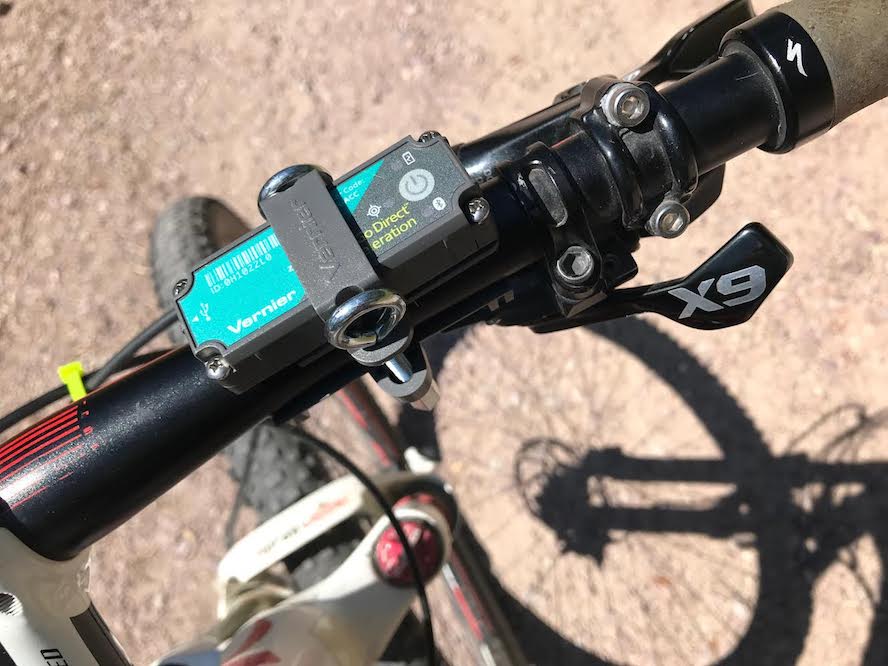

But I have another take on this. If there was no directional indication on the strain gauges, then there is a likelihood that at least one of the gauges would have been wired correctly. And statistics would support that half would be wired right. But since all sensors were backwards, something else seems to be at work. And that something else, in my mind, is a backwards understanding of how the acceleration would be measured by the strain gauges. Remember, the key measurement of interest was the slowing of the subject, not the speeding up. Or “eyeballs out” in fighter pilot vernacular.
Fast forward to September 8, 2004. On that day, an elegant spacecraft named Genesis was returning to earth after a three year mission collecting solar wind particles on hundreds of thin wafers each a hexagon about the size of a playing card. The fragile wafers were of 15 different materials including sapphire, gold, amorphous carbon, germanium, and silicon like the one I have in my teaching collection. It would be the first sample return mission to arrive back on earth since Apollo 16 back in 1972.
Because these wafers were so fragile, a complex and Hollywood-like recovery was planned where the returning capsule would be plucked out of the air by a helicopter as it gently drifted to earth under a parafoil (like a parachute, but directional).
Remember Murphy? Well, the plan was for the capsule to detect a change in acceleration as it slowed due to the resistance of earth’s atmosphere to the tune of 27 g. A drogue chute would automatically launch stabilizing the capsule until the main chute deployed. The whole system would begin when a small acceleration sensor said it was time. Unfortunately that sensor was installed backwards thus preventing the capsule of fragile glass-like disks from making any attempt to slow down. The Genesis capsule slammed into the Utah desert while traveling 193 miles an hour.
But wait, there’s more. Meanwhile, another sample return was on its way home, a capsule full of STARDUST, well, comet dust actually. But the mission was named STARDUST. The plan here was for the capsule to eject from the main spacecraft, fly through the atmosphere as the fastest man-made thing ever, then gently land in Utah under a fully deployed parachute. Except that the STARDUST sample return capsule contained the same accelerometer as did the Genesis capsule. Luckily the documentation of the construction of the STARDUST capsule showed the correct orientation of the accelerometer and STARDUST make a picture-perfect landing even doing a “NASCAR” victory lap upon landing.
Now imagine yourself in role of accelerometer installer. Which direction will the sensor experience the necessary force to activate the drogue parachute when the capsule encounters atmosphere? Not so easy is it? Now attach a few hundred million dollars to your decision and suddenly it’s a really big deal to get it right. Not just some chimpanzee on a rocket sled or a man in a centerfuge anymore.
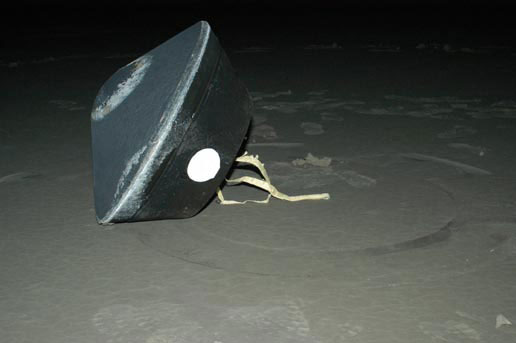
The Vernier Go Direct Acceleration sensor, with its onboard battery and bluetooth radio makes an amazingly powerful package that is only 26 grams and 30 cubic centimeters or about the size of a pack of gum.
And more information can be found in the user manual here.
Vernier lists the specifications as:
11 measurement channels:
- X-axis acceleration (m/s2)
- Y-axis acceleration (m/s2)
- Z-axis acceleration (m/s2)
- X-axis acceleration – high (m/s2)
- Y-axis acceleration – high (m/s2)
- Z-axis acceleration – high (m/s2)
- X-axis gyro (rad/s)
- Y-axis gyro (rad/s)
- Z-axis gyro (rad/s)
- Altitude (m)
- Angle (°)
- Range:
- Low acceleration: ±157 m/s2 (±16 g)
- High acceleration: ±1,960 m/s2 (±200 g)
- Gyros: ±2,000 °/s
- Altimeter: –1,800 m to 10,000 m (-5,900 ft to 33,000 ft)
- Angle: ±180°
Take a moment and consider those specification. A 10,000m altimeter? That much taller than Mt. Everest. And 200 g’s is plenty to kill a human four times over. However bacteria has survived over 400,000 g’s so don’t expect this sensor to capture the moment of g-force death of your E. Coli. But do expect it to do just about anything else you and your students can dream up.
Ad Astra!
On the 4th of July this year, a fitting date, America lost a true hero whom many people had never heard of, namely Robert Gilliland. Bob Gilliland was the chief test pilot and first person to fly the iconic SR-71 Blackbird, arguably the coolest airplane in history.
PITSCO Hot-Air Balloons
By Edwin P. Christmann
Posted on 2019-08-28
The “Zoon Hot-Air Balloons Getting Started Package” contains all the materials necessary for a class of 30 students to construct and launch their own hot air balloons. The kit is designed for students in Grades 3-12 and is user friendly. By having students follow the instructions provided in the manual, they can construct their very own hot air balloons out of the tissue paper that is provided in the kit.
The kit comes with 30 student user guides to guide students through creating their own hot air balloons. Subsequently, students can select whatever color of tissue paper that they desire to build their hot air balloon.
We found the instructions for constructing the hot air balloons to be clear and easy to follow. Moreover, the directions include helpful images to guide you through the instructions. In addition, the student user guide contains useful background information about the Zoon Balloon and a variety of balloon terms including: altitude, buoyancy, gore, temperature differential, and template. In essence, these terms will be essential for flying the balloon.
When assembling the hot air balloons, remind to students to be careful to not tear the delicate tissue paper. Holes in the tissue paper can prevent the hot air balloons from flying, so any tears or holes in the tissue paper must be mended before launching a hot air balloon. A picture of the kit is depicted below in Image 1. Image 2 is an example of what a constructed Zoon hot air balloon.
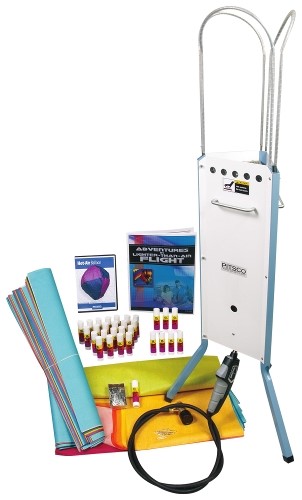
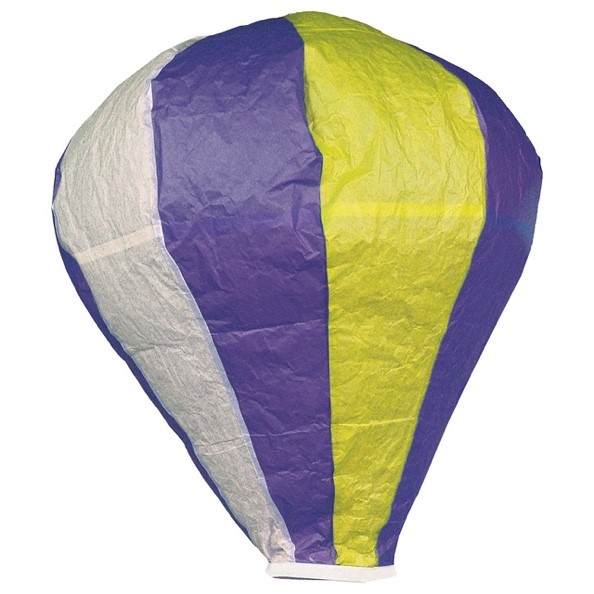
As a word of caution for time management, assembling the hot air balloons can be time consuming and could take several class periods. Therefore, by having students multiply tasks for efficiency, it would be helpful for students to work in pairs. Once the glue has dried and any holes have been repaired, it’s time to launch the balloon.
For safety, because propane hot air balloons need to be launched outside. The small propane canister needs placed in the propane cylinder base and screwed into place. Image 3 shows the propane canister on the propane cylinder base.
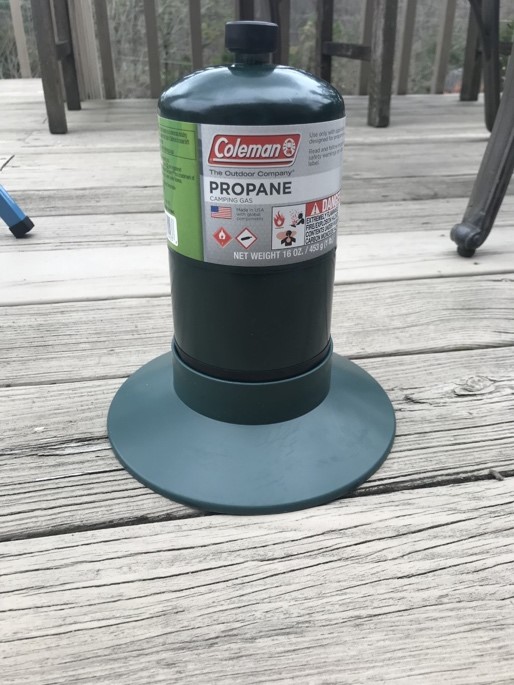
Once the propane canister is screwed into place, students can launch their hot air balloons by placing their hot air balloon on the launcher as shown in Image 4.
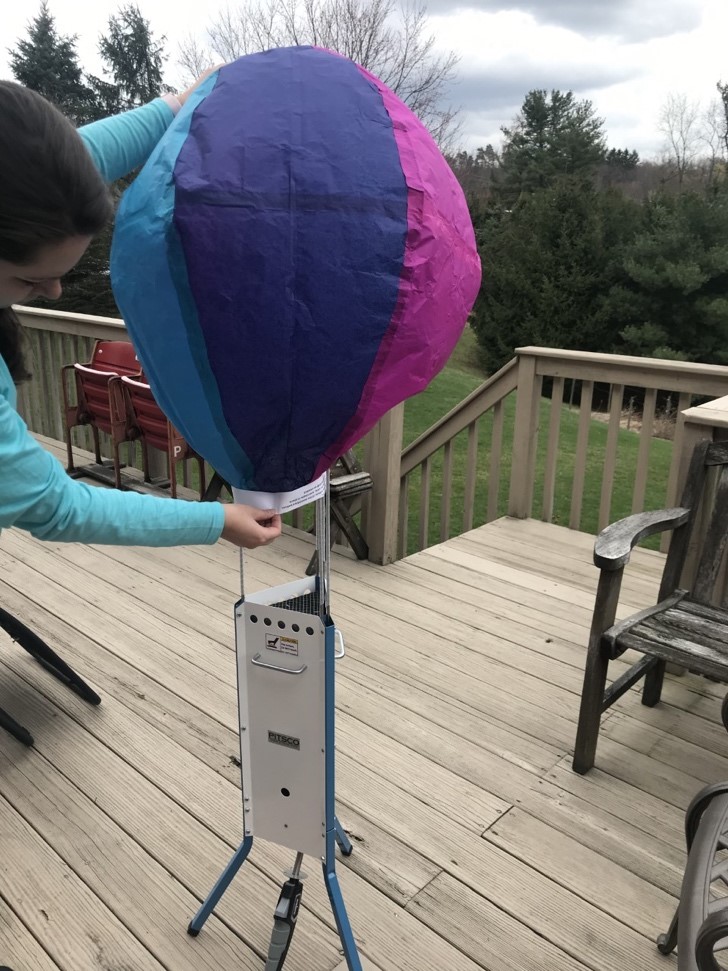
Once in position, make sure to wait for the balloon to inflate with air. Once the balloon is filled with air, students can release the balloon and it will fly. A picture of a hot air balloon in flight is depicted in Image 5.
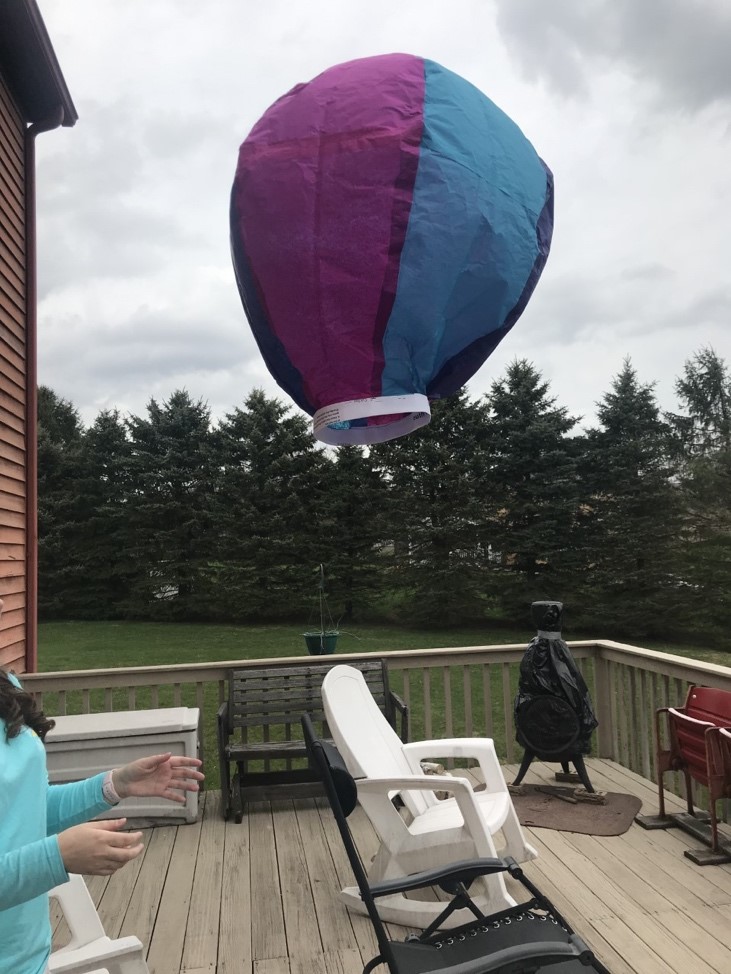
What’s Included: – Zoon Hot-Air Balloons
o 30 glue sticks
o Box of 100 paper clips
o Zoon Balloon template
o Assorted colored tissue paper
o Zoon Balloon User Guide (30 copies) – The Inflation Station Hot Air Balloon Launcher
o Launcher Base
o 6 bots, 3 wing nuts, and 6 nuts
o Launcher legs (3)
o Torch and Igniter o Nylon wire wrap (3)
o Propane Cylinder Base – Hot Air Balloon video – Adventures in Lighter Than Air Flight booklet
What You’ll Need:
– Propane canister
– Scissors
Cost: $515.00
Edwin P. Christmann is a professor and chairman of the secondary education department and graduate coordinator of the mathematics and science teaching program at Slippery Rock University in Slippery Rock, Pennsylvania. Emily Ferraro is a graduate student in the mathematics and science teaching program at Slippery Rock University in Slippery Rock, Pennsylvania.
The “Zoon Hot-Air Balloons Getting Started Package” contains all the materials necessary for a class of 30 students to construct and launch their own hot
Plan an Interactive Family Science Event with Support from an App
By Peggy Ashbrook
Posted on 2019-08-27
Welcome to guest post authors Cindy Hoisington, a science educator researcher at Education Development Center (EDC), and Claire Christensen, an educational media researcher at SRI International. This post is based on Cindy and Claire’s recent evaluation of the PBS KIDS Play & Learn Science app and activities.
Are you an early childhood educator with lots of experience doing science with children? Or are you just dipping your toes into science and STEM (science, technology, engineering, and math)? You are probably being asked to include more science in your curriculum and make connections to the other STEM disciplines. As you may know, families have a huge influence on their children’s attitudes toward doing and learning science. Family science interactions and conversations support children’s science and STEM interests and their views of themselves as capable learners. By getting families engaged, you can help them maximize their important role in promoting children’s science inquiry, interests, and self-confidence.
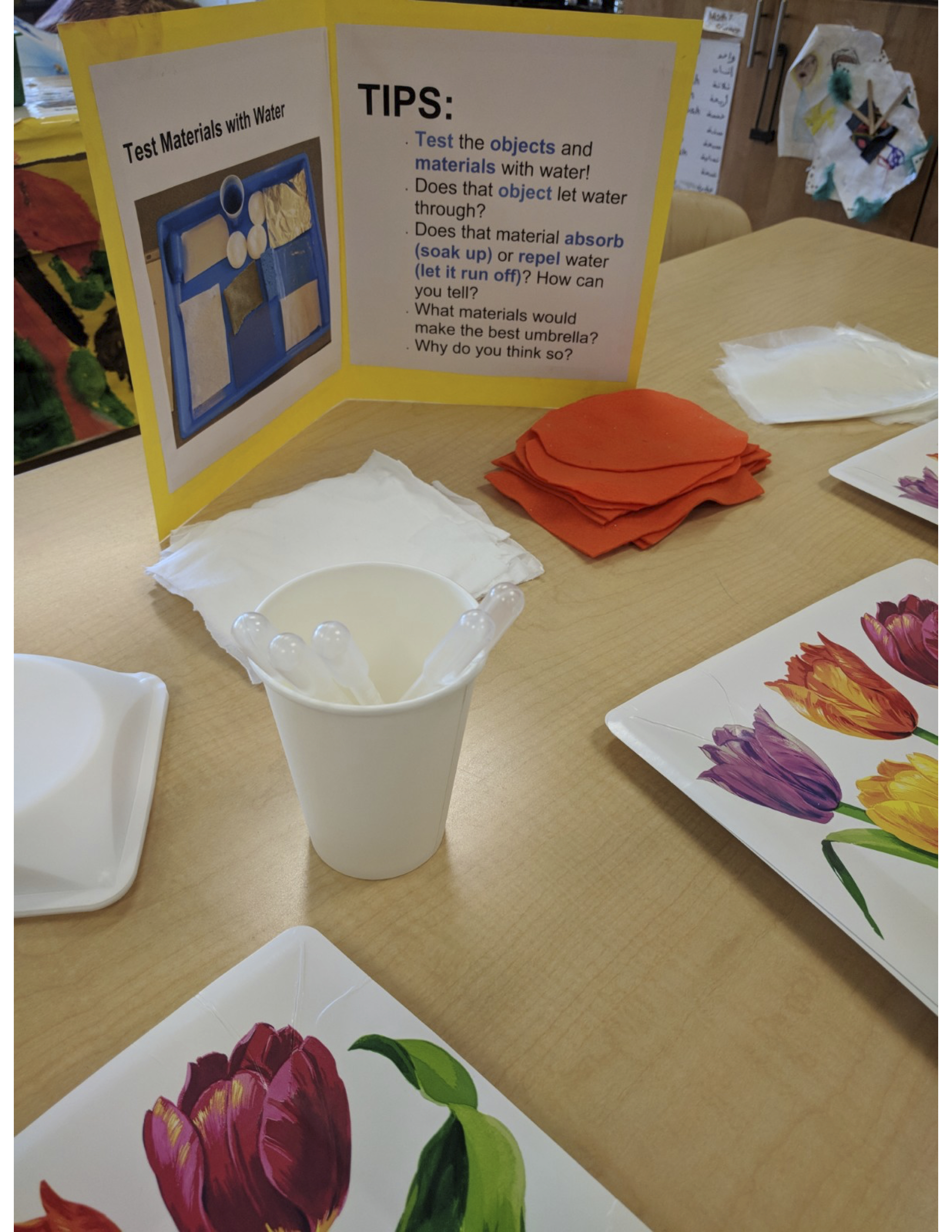
One way to do this is by hosting a family science event at your school or program. But where do you start? We found that the PBS KIDS Play & Learn Science app can be a useful tool for planning and hosting engaging and interactive family science events at early childhood programs.
The PBS KIDS Play and Learn Science app
The PBS KIDS Play & Learn Science app was developed as part of the Corporation for Public Broadcasting (CPB) and Public Broadcasting Service (PBS) Ready To Learn Initiative, funded by the U.S. Department of Education. It includes child and parent-facing resources on five topics: Ramp and Roll; Water Games; Shadow Play, Weather Control, and Gear Up (weather-appropriate clothing). The app is free to download on any smartphone or tablet. We did a study of the app and found that– along with supports including family science events—it positively influenced children’s science learning and vocabulary and parents’ engagement in science activities with their children.
Hosting a family science event
In order to conduct the study, we collaborated with two early childhood programs: a private childcare center in the South and a Head Start program in the northeast. As part of the study we used the Play & Learn Science app to plan and facilitate two 90-minute family science events, focused on Ramp and Roll and Water Games (Event 1) and Shadow Play and Weather Control/Gear Up (Event 2). We combined Weather Control and Gear Up since both topics relate to learning about weather. Program staff recruited interested families, provided feedback on our study plans, and helped us facilitate the family science events. In the process of implementing the study, we identified seven key strategies for hosting engaging and educative science events that get parents and children exploring, interacting, and talking together. We use the term “parent” to apply to any adult who provides primary care for a child.
Plan what, where, when, and who for the event
We found that careful planning was essential. At each family event we introduced two science topics and planned hands-on activities for each topic based on games and activities in the app. Activities were separated into separate stations (2 per topic). Event 1 focused on Ramp and Roll and Water Games and included the following hands-on activities:
- Explore the Roll: Families placed a variety of objects on ramps and recorded which objects slid and/or rolled depending on their shapes and how they were placed on the ramp.
- Hit the target!: Families placed a paper target on the floor and worked together to create an incline that would land a ball on the target.
- Build and play with ramps: Families built ramp systems using foam blocks, cardboard, baking pans, and cove molding.
- Will it sink or float?: Families made and recorded predictions, tested objects in water, recorded results, and talked about how their results compared to their predictions.
- Sink and float with boats: Families tested a variety of small plastic boats in water to find out how much weight they can hold and still float.
- Make and test your own boat: Families made boats from aluminum foil, tested them using metal washers as “passengers”, and recorded how many passengers their boats would hold before sinking.
- Read books about ramps and sinking and floating: Families read and talked about Roll, Slope, and Slide by Michael Dahl and Who Sank the Boat? by Pamela Allen.
At Event 1 we learned that families moved through the activities more quickly than we had anticipated so we incorporated more activities into Event 2 than we had originally planned.
Event 2 focused on Shadow Play, Weather Control, and Gear Up and included the following activities:
- Make shadow puppets: Families used cardstock, markers, craft sticks, hole punchers, and tape to make “puppets” and used them to create shadows on the wall with flashlights.
- Create shadow structures: Families built structures with foam blocks inside a large cardboard box layered with white paper and used flashlights to make and explore their structures’ shadows.
- Make flashlight shadows: Families investigated a variety of objects with flashlights and drew pictures of the shadows they created.
- Trace your shadow: Families used an LED work light to make and trace their own shadows on chart paper taped to the wall.
- Investigate thermometers: Families tested thermometers in cups of ice and warm water to observe how the liquid in the thermometers changed to indicate temperature.
- Dress for the weather: Families choose from 4 different weather scenarios and dress felt dolls for the weather choosing from a wide variety of weather-appropriate clothing.
- What’s the weather today?: Based on their own observations of the weather outdoors, families filled out a weather chart and talked about aspects of weather including sun, clouds, wind, precipitation, and temperature.
- Play with umbrellas: Families explored and role-played with different types of umbrellas and talked about how their sizes, shapes, and materials umbrellas make them useful for staying dry in the rain.
- Test materials with water: Families tested pieces of felt, cotton, plastic, and paper towel by dropping water on them with plastic pipettes and recording which material would be best for staying dry in the rain.
- Read books about shadows and weather: Families read and talked about Shadows and Reflections by Tana Hoban (wordless picture book) and Weather words and what they mean by Gail Gibbons.
We applied what we learned from Event 1 to our planning of Event 2. For example, at Event 1 families moved through the activities more quickly than we had anticipated so we added more activities to Event 2 than we had originally planned. We also learned that it was important to have plenty of space between stations and activities in order to avoid traffic jams. At Event 2 we assigned one facilitator the task of guiding families to less crowded activities. We planned both events to begin at one hour after pick-up time to accommodate family schedules and found that we needed that time to set-up the activities before families arrived. We created “passports”—large index cards with labels and picture cues of each station to help families navigate independently. Once a family completed a station they received a sticker to put on their passport. We collaborated with program staff to make sure there was a facilitator available at each station to encourage family participation, support parent/child interactions, and keep the activities organized.
Create a welcoming atmosphere
Entire families were invited to each event, including the preschoolers’ siblings. Having a staff member available to provide childcare enabled parents to focus more attention on their preschooler. Both events began with pizza and salad so parents wouldn’t have to worry about rushing home to make dinner. Finding enough space to accommodate 15-20 families for a meal was a challenge and we tried a conference room, a large classroom, and a gross-motor space. At the first event we gave a short talk about families’ important roles in sparking children’s interest and excitement in science, quickly realizing that we needed to keep our remarks brief since children were eager to get to the activities. We identified the exploration activities and where they were located, distributed the passports, and sent families off to explore.
Keep the focus on parent/child interaction and talk. Our primary goals were to show parents that science inquiry and learning can be active, engaging, and playful and to encourage them to explore, interact, and talk with their children during the activities.
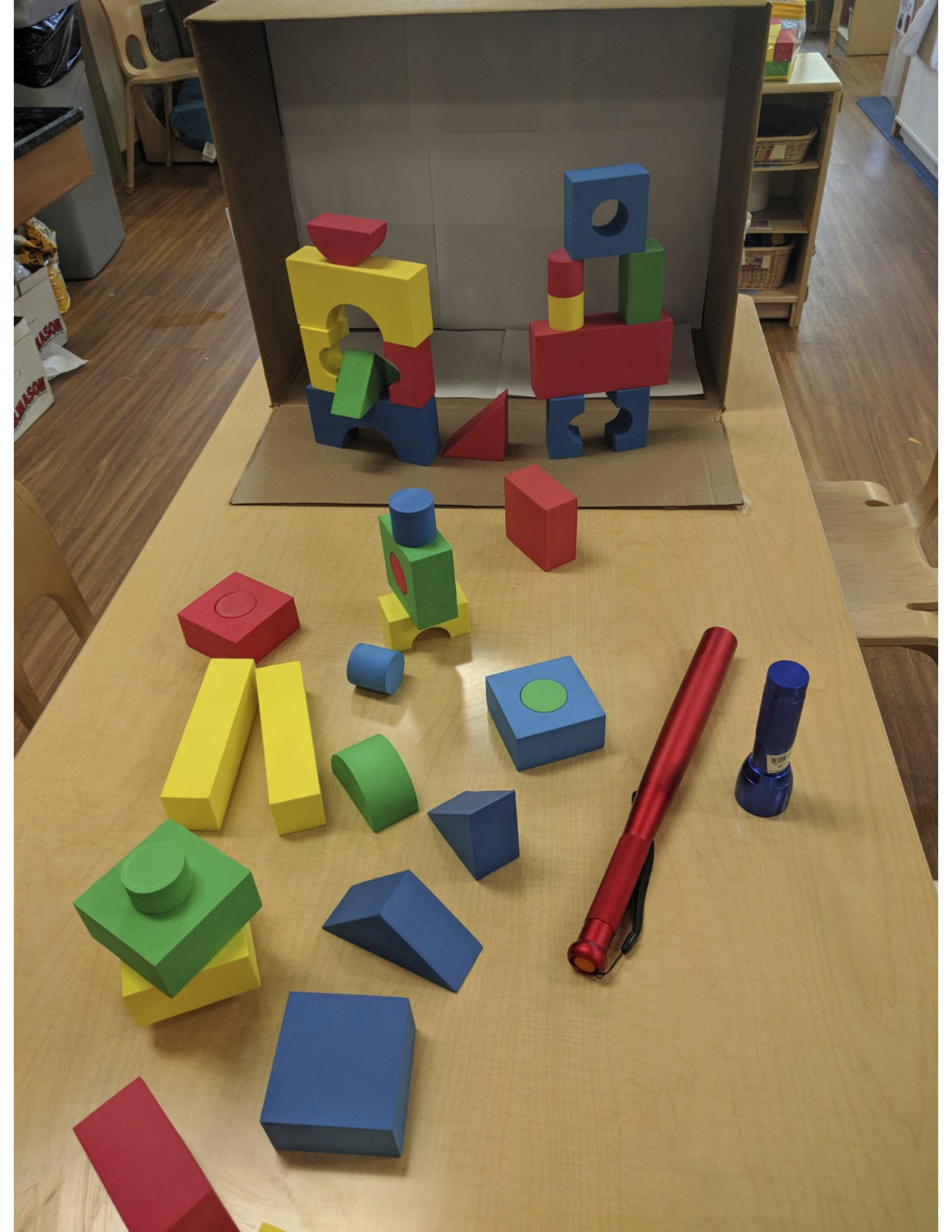
We intentionally chose activities that were easily accessible to all parents—no specialized science knowledge required! We found that activities in which children needed adult support—for recording predictions and results of an investigation for example– were most successful in promoting parent/child interaction. We also found that how we arranged the chairs at each activity was critical in supporting parent/child interaction. Parents were much less likely to sit with their child at an activity if they thought a child was waiting for a seat. One challenge was finding seats for adults who were not comfortable sitting in preschool-sized chairs.
Directly facilitate parent/child inquiry and interaction.
Directly before each of the events, we met with program staff who would be facilitating the activities, reviewed our plans, and suggested a variety of specific strategies they might use to promote parent/child interaction. These included 1) encouraging parents to observe their children’s play and point out science connections—for example drawing attention to the perseverance and problem-solving involved in creating a ramp system; 2) modeling talk tips parents might use such as Do you think the car will still roll if you turn it upside down?; and 3) suggesting challenges parents and children could address together such as How can you create one shadow with both of your bodies? We found that some parents wanted to explain science concepts to children by telling them for example “all heavy things sink”. In this case facilitators were encouraged not to correct parents, but to gently challenge their ideas by asking for example What about this big heavy wooden block? Do you think it will sink or float?
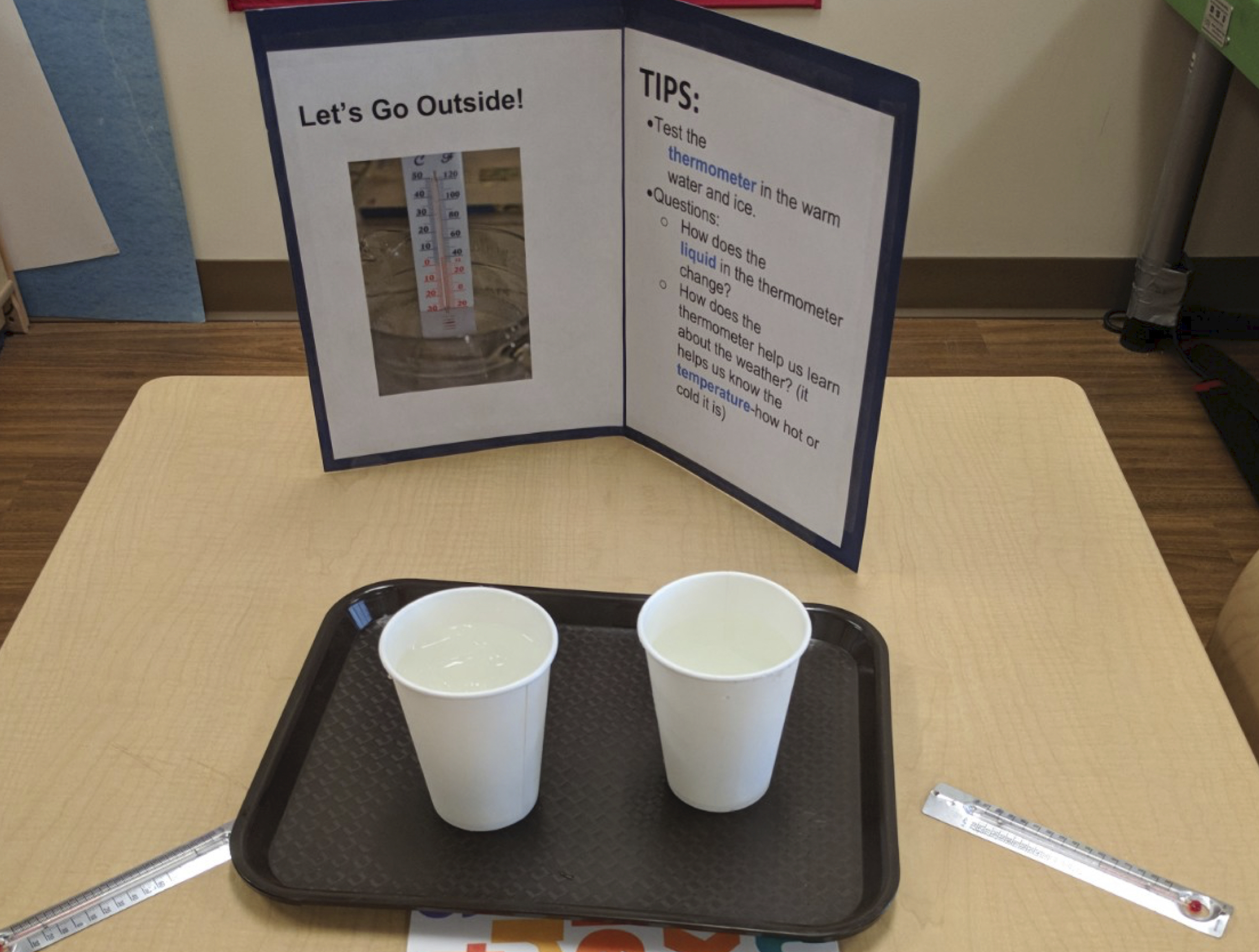
Create signage to support inquiry and interaction. We created clear signage for each activity that included questions parents might ask to spark inquiry.
Our signage was in English only, but we highly recommend providing signage in all languages spoken by the families. Signage at the roll and slide activity included What is similar about all the objects that rolled? and How can you turn that object to make it slide? and signage at the shadow tracing activity included What happens to your shadow when you move closer to/farther from the light? and How can you change the shape of your shadow? We found that parents used these questions more often when we drew their attention to the signage and provided explicit modeling.
Provide resources for at-home science activities. All of the activities at the events featured familiar household materials and required minimal set-up. We provided paper-based directions for each activity—including talk tips and extension ideas—to support families’ home explorations. We were also able to give families some take-home materials such as small LED flashlights, sidewalk chalk for tracing shadows outdoors, child-safe thermometers, ping pong balls and paper targets, and plastic eyedroppers for water explorations. During dinner at the second event we engaged families in small group discussions about their home experiences. We were impressed to hear families talk about how they had extended children’s ramps and water explorations to the playground (rolling balls down slides) and to bath-time (exploring sinking and floating in the tub). Parents’ enthusiasm was contagious as they shared their children’s on-going interest in the topics they had explored at the first event and how much they and their children were anticipating the second one.
Consider incorporating digital technology. As well as the parent-facing resources we used to plan our family science events, the PBS KIDS Play and Learn Science app includes developmentally-appropriate digital science games for preschoolers. We incorporated parent/child tablet use at each station along with the direct, hands-on explorations, pointing families to the game(s) in the app most relevant to the science content they were exploring at that station. We found that integrating tablet use within stations—rather than introducing them separately— helped parents and children make explicit connections between their digital and real-world investigations. We also used the tablet activities to familiarize parents with the parent-facing resources in the app—including the hands-on activities, extensions, and talk tips.
Keep in mind that an app with parent science supports can be a useful tool for planning and hosting family science events and supporting children’s inquiry whether or not you decide to incorporate digital games.
In conclusion
Parents can be powerful mediators of their children’s science experiences, but science can be a challenging domain for parents to support, especially when they lack access to information and resources about children’s development and learning in science. By engaging families at your school or program, you can be instrumental in helping them maximize their critical role in supporting their children’s science inquiry, interests, and confidence. We were fascinated to observe how early children’s specific science interests begin to emerge as we observed individual children return again and again to their favorite ramps, water, shadows, or weather activities. You can be even more effective in supporting families when you align children’s home and school science explorations. Teachers and administrators at the programs that participated in our study were so amazed at the enthusiasm families expressed about the science events, that they decided to continue the topical explorations in classrooms.
Below are some suggestions for other free educational apps that include child, parent, and teacher-facing resources as well as some teacher-friendly research articles about supporting children’s and families’ inquiry-based science experiences.
Digital apps for parents and teachers:
Resources for teachers:
STEM Starts Early; Grounding science, technology, engineering, and math education in early childhood
Supporting Parents to Support Science
References
Allen, P. (1996). Who sank the boat? Putnam Books. New York, N.Y. ISBN13: 978-0-698-11373-2
Dahl, M. (2006). Roll, slope, and slide; A book about ramps. Picture Window Books. Mankato, MI. ISBN 978-0-688-07089-2
Gibbons, G. (1990) Weather words and what they mean. Holiday House. New York, N.Y. ISBN13: 978-0-823-40805-4
Hoban, T. (1990). Shadows and reflections. Greenwillow Books. New York, N.Y. ISBN 978-0-688-07089-2
Welcome to guest post authors Cindy Hoisington, a science educator researcher at Education Development Center (EDC), and Claire Christensen, an educational media researcher at SRI International.
Apply to Serve on the NSTA Board or Council by Dennis Schatz
By Kate Falk
Posted on 2019-08-26
Now that fall is almost here it is time for you and our colleagues to apply to be an NSTA board or council member. The web portal to apply – or nominate someone else – is now open at https://www.nsta.org/about/governance/nominations.aspx. Applications are due October 17, 2019.
I am on my 5th year on the board, first as the Informal Science Director and currently as President. The experience has been one of the most fulfilling of my career. I appreciate the opportunity to engage with thoughtful people who believe passionately in the value and importance of science education for the future of our children, society and even human civilization. It has also been a great learning experience, as I now better understand the science education landscape across the country and Canada.
But don’t just take my word for it:
“Being a member of council and liaison to science educators in District XIV (Arizona, Colorado and Utah) has showed how NSTA involvement can create on ramps to teacher leadership. Before I discovered teaching as a career, I was a meeting planner and being a part of the planning teams for the National Congress on Science Education, and the Phoenix Regional Conference, has made me so happy as my two careers have intersected and I have met so many amazing people working to make a difference in education.”
– Wendi Laurence, District XIV District, NSTA Council
“Being a part of the NSTA governance has been rewarding in so many ways! I continue to grow and learn as a science educator and I also get to meet and work with so many incredible people who are passionate about ensuring a quality science education for all students. I love to encourage others to participate in NSTA leadership roles as part of their science education journey.”
– Jen Gutierrez, Division Director Professional Learning in Science Education, NSTA Board of Directors
The Board is comprised of three (3) NSTA Presidents and ten (10) Division Directors. The Council is comprised of the NSTA President and eighteen (18) District Directors.
Board of Director Offices to be filled in the 2020 election are:
- President—Term of office: 3-year commitment beginning June 2020 through May 2023 (Year 1 as President-elect; Year 2 as President; Year 3 as Retiring President)
- Division Directors—Term of office: 3-year commitment beginning June 2020 through May 2023
- Multicultural/Equity in Science Education
- Preservice Teacher Preparation
- Research in Science Education
Council Offices to be filled in the 2020 election are:
- District Directors—Term of office: 3-year commitment beginning June 2020 through May 2023
- District I: Connecticut, Massachusetts, Rhode Island
- District VI: North Carolina, South Carolina, Tennessee
- District VII: Arkansas, Louisiana, Mississippi
- District XII: Illinois, Iowa, Wisconsin
- District XIII: New Mexico, Oklahoma, Texas
- District XVIII: Canada
The NSTA Board of Directors and Council work together to promote excellence and innovation in science teaching and learning for all, and NSTA is only as strong as the people who volunteer to be active on our board, council, and committees. Please encourage all strong leaders in the field to apply.
Don’t forget the application deadline is October 17, 2019 and you can apply at https://www.nsta.org/about/governance/nominations.aspx.
 Dennis Schatz is the president of the National Science Teaching Association (NSTA). He began serving his one-year term on June 1, 2019. Schatz is currently Senior Advisor at the Pacific Science Center in Seattle, Washington and Senior Fellow at the Institute for Learning Innovation. He was the founding field editor for the journal Connected Science Learning, a joint effort of NSTA and ASTC (Association of Science Technology Centers).
Dennis Schatz is the president of the National Science Teaching Association (NSTA). He began serving his one-year term on June 1, 2019. Schatz is currently Senior Advisor at the Pacific Science Center in Seattle, Washington and Senior Fellow at the Institute for Learning Innovation. He was the founding field editor for the journal Connected Science Learning, a joint effort of NSTA and ASTC (Association of Science Technology Centers).
The mission of NSTA is to promote excellence and innovation in science teaching and learning for all.
Now that fall is almost here it is time for you and our colleagues to apply to be an NSTA board or council member. The web portal to apply – or nominate someone else – is now open at https://www.nsta.org/about/governance/nominations.aspx. Applications are due October 17, 2019.
Volume 1, Issue 11
Practical Program Evaluation
Volume 1, Issue 11
Practical Program Evaluation
Volume 1, Issue 11
Practical Program Evaluation
Nature Walks
By Gabe Kraljevic
Posted on 2019-08-23
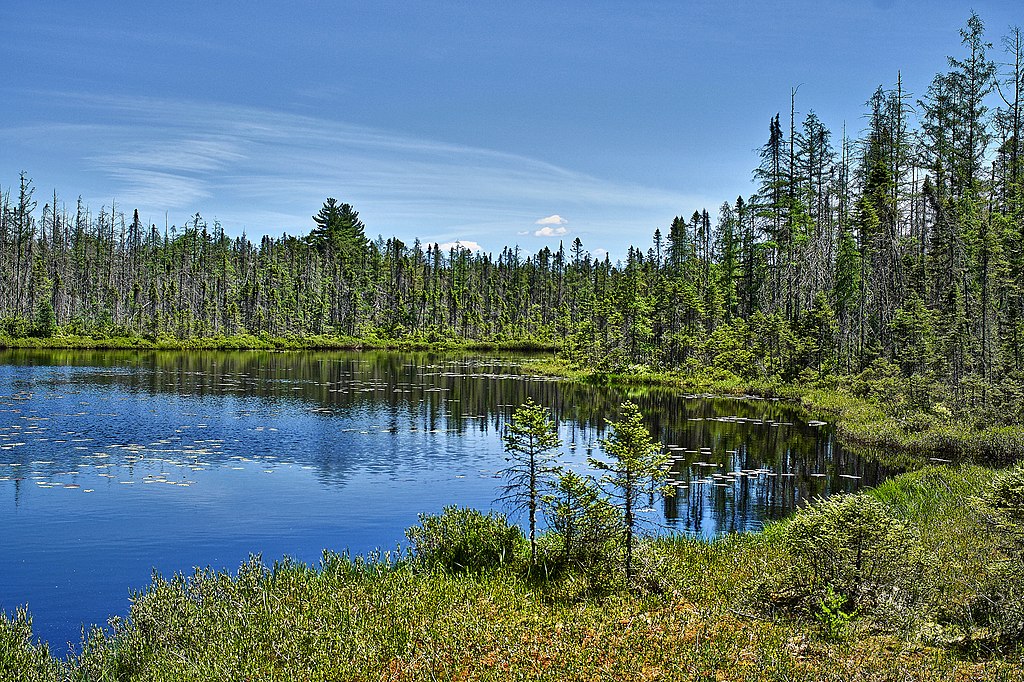 My grade 3 students seem to be bored with the content on ecosystems. I’m wondering if anyone has any ideas of what I could do to make ecosystems more engaging?
My grade 3 students seem to be bored with the content on ecosystems. I’m wondering if anyone has any ideas of what I could do to make ecosystems more engaging?
— A., Arizona
Not being able to visit all the ecosystems in the world somewhat forces our ability to develop engaging activities. In this case, studying one or two ecosystems in depth and discovering the underlying connections that apply to all the others may be the way to teach this in an engaging manner.
I highly recommend field trips to local ecosystems and conducting simple ecological surveys. Many nature centers offer education programs that include field studies. Make sure to prepare your students for the trip and have follow-up activities afterwards. Students will also meet experts and role-models on these excursions.
You can bring ecology right into your classroom using pop-bottle ecosystems. I have written about this before (http://bit.ly/2KbeWsf ) and have a collection of resources in the Learning Center: http://bit.ly/PopBottleEcosystems.
Technology can broaden your horizon. Search for organizations that connect classrooms around the globe. Find a partner school somewhere in the world that will engage in an exchange of ecosystem data.
I successfully engaged and motivated students to dive deeply into the topic by having them research ecological or conservation issues. They used the research to develop information pamphlets, posters, and websites to advocate for action. Organize a conservation expo where students can set up booths to share their information with other students in the school or as an evening activity.
Hope this helps!
Photo credit: Kerbla Edzerdla [CC BY 3.0]
 My grade 3 students seem to be bored with the content on ecosystems. I’m wondering if anyone has any ideas of what I could do to make ecosystems more engaging?
My grade 3 students seem to be bored with the content on ecosystems. I’m wondering if anyone has any ideas of what I could do to make ecosystems more engaging?
— A., Arizona
Designing Engineering Projects That Teach Science Concepts by Cory Culbertson
By Cory Culbertson
Posted on 2019-08-22
Lately I’ve been thinking a lot about the engineering projects in my courses. On the surface, they don’t seem like something I need to worry about. My students love these projects and talk about them all year. My administration likes the student-centered activities and the final products that students can showcase. I look forward to these projects as well. So why am I trying to fix what is already working?
My motivation is that when I consider what seems to be “working” in an engineering project, I often see a lot of student engagement and some good engineering practices, but the science content is hard to find. I know many other teachers have also noticed this shortcoming in engineering projects: There are some science connections to introduce the project, and there might be time to review some concepts at the end, but in the middle of most engineering projects, there is embarrassingly little student contact with science DCIs. Or as a colleague recently said with a sigh, “Now we have three days of messing around with cardboard and hot glue.”
So over the past few years, I’ve been on a mission to ensure that my students will strengthen their understanding of science concepts through their engineering projects, not just before and after them. I’d like to share some of the things I’ve learned, along with an example of how revising one particular project improved science learning for my students.
Lessons Learned
- Start with the science ideas, then find a project that fits. It’s tempting to start by finding an appealing engineering activity, then making a place for it in the curriculum. But that leads to tenuous connections between the science and the engineering. Focus on the science first, then choose a project that creates a need for students to develop and apply the science to meet the project criteria.
- Provide structure for the design process. Students who are given a lot of unstructured project time tend to use trial-and-error methods to make progress. (Or they find other ways to occupy their time!) One technique that has been very effective is to review a written design proposal prepared by students before they do any hands-on building. In the design proposal, students document how they plan to build their design and justify their proposed solution with research data, science reasoning, and/or calculations. The design proposal is a natural way to guide students through applying science DCIs and SEPs, and it makes for an excellent assessment point early in the project.
- Limit the scope of the engineering challenge. Even a modest-sized engineering project has so many choices students can make. I want them to focus on the design decisions that connect directly with the science ideas. By providing procedures and materials for some of the more peripheral design problems, I free my students to focus on the engineering problems that are more instructionally productive.
Designing My Engineering Project for the NGSS
A few years ago, I sadly realized that the engineering project that had been part of my electricity unit for years simply wasn’t doing much for the overall goals of the course. This project involved students designing and building a model electrical system with series and parallel circuits. While the project was polished and popular with students, they spent most of their time running wires and fixing loose connections. I wanted them to be learning some science.
Instead of trying to patch up this project, I went back to square one, considering what science ideas I really wanted my students to learn. This unit included electricity and circuits, but the core science ideas from the NGSS are really elements of PS3.A, B, and D (see table below). It was time for brainstorming: Was there an engineering application that relied on understanding how energy is conserved as it is converted to and from different forms?
Among other possibilities, what came to mind was the rooftop solar system that some colleagues had recently installed. They had made careful calculations to match energy flows into and out of the system, and even installed a nifty display that tracked watts moving through the system in real time. A solar energy project also has connections to the ideas from ETS1.A about addressing global and local resource needs. There was some good engineering and science in this, and my students could do it, too.
Disciplinary Core Idea HS-PS3 Energy and HS-ETS1 Engineering Design
| Component Ideas | Element |
| PS3.A: Definitions of Energy |
|
| PS3.B: Conservation of Energy and Energy Transfer |
|
| PS3.D Energy in Chemical Processes |
|
| ETS1.A |
|
As a concept for the project began to solidify in my mind, I thought about how to structure the engineering design process for my students. The engineering challenge would be to design and build a system that converts sunlight to electricity, stores the energy in a rechargeable battery, and powers electrical loads. Students would be modeling the energy transfers within the system and predicting the level of charge in the battery, which is an element of the SEP Developing and Using Models—Develop and use a model based on evidence to illustrate and predict the relationships between systems or between components of a system. The science and engineering core ideas working in tandem would allow students to design a system that was guaranteed to supply enough energy for the required uses, not unlike the tasks of a professional solar engineer.
The design proposal that students would submit to me could also mimic a real-life proposal for a rooftop solar system, complete with the calculations needed to show the system would function as intended. After I approved their proposals, students would build the system and measure energy flows to see if they matched their predictions.
The first time I tried out this new project, I learned a big lesson about giving students too many design choices. Students had almost complete freedom in their choice of batteries, voltages, loads, and wiring layout. They spent so much time choosing and connecting components that we ran out of time to do the data collection that was so critical to the project. Oops!
When we do this project now, each student group receives the same basic components to work with. I also give students instructions for connecting some components together so they can focus on designing the core parts of the system. This change alone has restored several class days and time to collect the data needed for the mathematical analysis of energy flows.
Revising this project has been time well spent. Students are developing understanding of engineering and science ideas in the same amount of class time as I devoted to the old circuit project. It’s not perfect yet, but it’s working. I’m already thinking about what I want to do differently this year…
I love sharing project ideas with other teachers. Do you have an engineering project that does a great job connecting to the science “big” ideas? Do you have one that you wish did so?
 Cory Culbertson teaches engineering technology at University High School, part of the Laboratory Schools of Illinois State University in Normal, Illinois. He co-authored the book Engineering in the Life Sciences from NSTA Press. His work has also included curriculum writing, editing, and presenting professional development for Project Infuse, the National Center for Engineering and Technology Education, and Project ProBase. Culbertson was an Educator-at-Sea aboard the Exploration Vessel Nautilus in 2011 and 2012. Before becoming an educator, he worked as a test engineer for a large manufacturing company. Culbertson earned a bachelor’s of science in engineering degree in mechanical engineering from the University of Michigan–Ann Arbor and a master of science in technology education from Illinois State University.
Cory Culbertson teaches engineering technology at University High School, part of the Laboratory Schools of Illinois State University in Normal, Illinois. He co-authored the book Engineering in the Life Sciences from NSTA Press. His work has also included curriculum writing, editing, and presenting professional development for Project Infuse, the National Center for Engineering and Technology Education, and Project ProBase. Culbertson was an Educator-at-Sea aboard the Exploration Vessel Nautilus in 2011 and 2012. Before becoming an educator, he worked as a test engineer for a large manufacturing company. Culbertson earned a bachelor’s of science in engineering degree in mechanical engineering from the University of Michigan–Ann Arbor and a master of science in technology education from Illinois State University.
Note: This article is featured in the August 2019 issue of Next Gen Navigator, a monthly e-newsletter from NSTA delivering information, insights, resources, and professional learning opportunities for science educators by science educators on the Next Generation Science Standards and three-dimensional instruction. Click here to sign up to receive the Navigator every month.
The mission of NSTA is to promote excellence and innovation in science teaching and learning for all.
Lately I’ve been thinking a lot about the engineering projects in my courses. On the surface, they don’t seem like something I need to worry about. My students love these projects and talk about them all year. My administration likes the student-centered activities and the final products that students can showcase. I look forward to these projects as well. So why am I trying to fix what is already working?
Next Gen Navigator
Linking Science and Engineering Through Good Questions
By Greg Bartus
Posted on 2019-08-22
Engineering design projects are a wonderful opportunity for students to develop science disciplinary core ideas (DCIs). (As many of you know, with the release of the NGSS, learning in engineering must be integrated with developing DCIs in physical, life, and/or Earth and space sciences.) To take advantage of this opportunity, it is important to ask questions that encourage (or necessitate) students to use specific science ideas to explain choices they make.
Let’s say I ask my students to take part in an engineering design challenge in which the goal is to design a device that will prevent a cold beverage from warming up (DCI PS3.B: Conservation of Energy and Energy Transfer—Energy is spontaneously transferred out of hotter regions or objects and into colder ones.) I give students a can of cold soda, an infrared temperature gun, and a few materials they can use to cover the can. The device has to keep the soda’s temperature from increasing more than 5°F in 20 minutes. Student designs are constrained by time, budget, and/or materials.
Students test materials, analyze their data, and design their solutions. As the instructor, I want to know how my students are applying scientific ideas or principles to design their solutions (an element of SEP Constructing Explanations). I find out by asking questions to surface students’ mental models of 1) energy moving from hotter objects to colder ones (PS3.B) and 2) the relationships among temperature, heat, and thermal energy (an element of PS3.A). These questions push my students to think more deeply about how their understanding of these “big” science ideas fits with what their observations from testing the materials are telling them. Research suggests that this questioning is the best way to help students’ thinking advance from a preconception toward the correct scientific idea.1
These are examples of the questions I ask to start conversations with my students:
- What inspired your ideas?
- How does your design address the criteria?
- Why did you select the materials you did?
- How did the constraints affect your design choice?
- How does the data collected during material testing support your choice?
These “kick-off” questions offer an opportunity for my students to share their design thinking. Students typically say their ideas come from prior experiences like using the foam holders that keep cans and bottles cool. I’ve seen my students use this type of mimicry as the basis for creative and innovative designs, but I have to be sure to dig a little deeper to get at the science ideas they are using to justify them.
My follow-up questions are drawn from elements of the DCIs PS3.A and PS3.B and the crosscutting concept (CCC) Energy and Matter—The transfer of energy can be tracked as energy flows through a designed or natural system and Structure and Function—Structures can be designed to serve particular functions by taking into account properties of different materials, and how materials can be shaped and used. For example, I ask the students whose inspiration comes from using foam can holders questions like these:
- Why do you think that the foam holder works so well?
- What materials did you select to use to mimic the foam holder? Why?
- How does this material work to keep the can cold?
I listen carefully to answers students provide to see if they reveal any common preconceptions that did not surface before. Being mindful of PS3.A: Definitions of Energy—The term “heat” as used in everyday language refers both to thermal energy (the motion of atoms or molecules within a substance) and the transfer of that thermal energy from one object to another. In science, heat is used only for this second meaning, it refers to the energy transferred due to the temperature difference between two objects, when students say their design is “trapping cold” or “preventing the temperature from moving” or “containing heat,” I ask questions like these:
- What is cold?
- Is temperature a substance?
- Are there different “substances” such as hot and cold?
- What might be the nature of the “substance”?
- How could we determine which way this “substance” flows?
- What is heat?
Each of these questions can lead to great student discussion and allows me to formatively assess student understanding and move students from partial understanding toward scientific accuracy. For example, if students say that “cold” and “warm” are substances, I might do a demonstration such as hitting a nail with a hammer, then ask my students why the nail head becomes warm after it’s hammered. [Note: Repeatedly throwing a ball at the same spot on a wall will yield a similar result.] Students typically arrive at the conclusion that the hammer added vibrations (motion) to the nail and that vibration is what we recognize as “warm.”
We then discuss how the temperature of the nail cools, and students say the vibrations (motion) passed from the nail to the surroundings. We’ve moved from the idea of warm and cold being substances toward the concepts of thermal energy and heat. (This is just a brief example; admittedly, the issue doesn’t usually get resolved that fast.) Then I ask students how they can use these same ideas to explain how their device keeps the soda can from warming up.
I hope these questions are helpful and inspire you to engage students in the science ideas they are learning when they take part in engineering activities. Feel free to share your experiences and any questions you use to connect science and engineering.
Reference
1National Research Council. 1997. Chapter 4: Misconceptions as barriers to understanding science. In Science teaching reconsidered: A handbook. Washington, DC: National Academies Press.
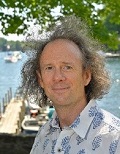 Greg Bartus will teach Earth science at Broome Street Academy in New York City this fall. He previously taught high school science courses in upstate New York for five years. In between teaching gigs, he spent 15 years leading professional development workshops on all things STEM, and providing classroom coaching for middle school teachers. Bartus has a master of arts in teaching in science education and a bachelor of science degree in Agricultural and Biological Engineering from Cornell University.
Greg Bartus will teach Earth science at Broome Street Academy in New York City this fall. He previously taught high school science courses in upstate New York for five years. In between teaching gigs, he spent 15 years leading professional development workshops on all things STEM, and providing classroom coaching for middle school teachers. Bartus has a master of arts in teaching in science education and a bachelor of science degree in Agricultural and Biological Engineering from Cornell University.
Note: This article is featured in the August 2019 issue of Next Gen Navigator, a monthly e-newsletter from NSTA delivering information, insights, resources, and professional learning opportunities for science educators by science educators on the Next Generation Science Standards and three-dimensional instruction. Click here to sign up to receive the Navigator every month.
The mission of NSTA is to promote excellence and innovation in science teaching and learning for all.
Engineering design projects are a wonderful opportunity for students to develop science disciplinary core ideas (DCIs). (As many of you know, with the release of the NGSS, learning in engineering must be integrated with developing DCIs in physical, life, and/or Earth and space sciences.) To take advantage of this opportunity, it is important to ask questions that encourage (or necessitate) students to use specific science ideas to explain choices they make.



